Where to Find Downloaded Files in Safari on a Mac and How to Manage Them
After downloading a file, it's not always easy to find where it saved. Here's how to find and manage Safari downloads on your Mac.
While browsing the web in Safari, it’s common to need to download files from different websites. But sometimes it can be a challenge to find where these Safari downloads are saved.
Below are several ways to find and manage Safari downloads on your Mac.

How to Download Files Using Safari
There are different ways to save items from Safari to your Mac , depending on the type of item you want to save. While some items in webpages can’t be downloaded, files, images, software, and apps often come with a dedicated download button. Otherwise, Control-click or two-finger tap an item to save or download it.
It’s best not to download software or apps if they aren’t from a trusted source.
Where to Find Safari Downloads on a Mac
Unless you’ve chosen otherwise, items that you’ve downloaded from Safari automatically go to your Downloads folder. To find this, open Finder and click Downloads from the sidebar or press Cmd + Option + L .
You can change where your downloaded files save, if you want:
- Head to Safari > Preferences .
- Click the General tab. Go to File download location , then choose from the popup. Select Ask for each download if you want to be in more control of each download.
- If you want to select a specific destination, click Other and select your desired folder.
Use the Downloads Button in Safari
Quickly access your downloads in Safari by clicking the Downloads button, a downward arrow enclosed in a circle icon on the top-right of the Safari window. Note that this won’t appear unless you’ve recently downloaded an item.
Open the Downloads Stack in the Dock
Another way to immediately access your downloaded files is through the Dock. Your recent downloads are often found on the right side of the Dock in a stack. Hover over it to preview the contents or click to expand it.
Open the Downloads Folder in Finder
As we already mentioned, you can also find your Safari downloads using Finder. This is a valuable utility to locate items on our Mac. Simply click the magnifying button on your menu bar and type "downloads," or go to your Dock and click Finder to open the Finder window.
You can usually find the Downloads folder in the sidebar, under Favorites.
How to Manage Your Safari Downloads
There are several ways to manage your in-progress or completed downloads in Safari. To perform these actions, open the Downloads menu in Safari itself. Here’s what you can do:
- Pause Downloads: If you’re currently downloading, click the stop button beside the file name to pause the download, then click the resume button to resume it again.
- Remove a downloaded item: If you want to remove a single item from the list, Control-click the item and select Remove from List . You can also remove all your recently downloaded items by clicking Clear in the top right of the popup.
By default, Safari automatically deletes downloaded items after a day. If you want to change this:
- Go to Safari > Preferences .
- Click General , then go to Remove download list items . Choose from After one day , When Safari quits , Upon successful download , or Manually .
Manage Your Safari Downloads
There is a lot of content you can download on the web, and simply knowing how to download it is usually half the battle. But once you’ve done that, you can use the tips in this guide to find and manage your Safari downloads with ease, even customizing your download preferences to get fuller control over where your files save and when they get deleted.
The Tech Edvocate
- Advertisement
- Home Page Five (No Sidebar)
- Home Page Four
- Home Page Three
- Home Page Two
- Icons [No Sidebar]
- Left Sidbear Page
- Lynch Educational Consulting
- My Speaking Page
- Newsletter Sign Up Confirmation
- Newsletter Unsubscription
- Page Example
- Privacy Policy
- Protected Content
- Request a Product Review
- Shortcodes Examples
- Terms and Conditions
- The Edvocate
- The Tech Edvocate Product Guide
- Write For Us
- Dr. Lynch’s Personal Website
- The Edvocate Podcast
- Assistive Technology
- Child Development Tech
- Early Childhood & K-12 EdTech
- EdTech Futures
- EdTech News
- EdTech Policy & Reform
- EdTech Startups & Businesses
- Higher Education EdTech
- Online Learning & eLearning
- Parent & Family Tech
- Personalized Learning
- Product Reviews
- Tech Edvocate Awards
- School Ratings
Learning To Read: Everything You Need to Know
Product review of the arzopa z1c portable monitor, how to teach phonics: everything you need to know, reading groups: everything you need to know, product review of the ultenic p30 grooming kit, reading anxiety in children: everything you need to know, iep meetings and parent-teacher conferences: everything you need to know, college disability services and accommodations: everything you need to know, spam vs. phishing: how are these unwanted messages different, how to charge your iphone properly, where to find downloaded files in safari on a mac and how to manage them.

Safari, the default browser on Mac, is a great tool for browsing the internet. With its easy-to-use interface and useful features, it is the go-to option for many Mac users. Safari’s download manager is also a highly useful tool, allowing users to easily download and access files from the internet.
In this article, we will explore where to find downloaded files in Safari on a Mac and how to manage them.
Where to Find Downloaded Files in Safari on a Mac
Safari saves all downloaded files in the Downloads folder on your Mac. You can find the Downloads folder by opening a new Finder window and looking under the Favorites section in the sidebar. Alternatively, you can click on the Go menu in the menu bar, choose Downloads, or press the shortcut Command + Option + L.
Inside the Downloads folder, you will see a list of all the downloaded files and folders. The files appear in chronological order with the newest downloads at the top.
How to Manage Downloaded Files in Safari on a Mac
Managing your downloaded files in Safari is easy. You have the option to open, move, delete, or share them with others.
Opening a Downloaded File
To open a downloaded file, simply double click on it. Safari automatically saves and opens commonly downloaded files such as PDFs, images, and videos. However, if the file type is not recognized by Safari, it may prompt you to select a program to open it with.
Moving a Downloaded File
Controlling clutter in your Downloads folder is important. It is essential to move downloaded files from their default location to where you can easily find them. To move a downloaded file, simply drag and drop it to a different folder or location, such as your desktop or Documents folder.
Deleting a Downloaded File
To delete a downloaded file, select the file and press the Delete key on your keyboard. Alternatively, you can right-click on the file and choose Move to Trash. The deleted files will still take up space on your Mac until you empty the Trash.
Sharing a Downloaded File
Sharing your downloaded files can be useful, especially when collaborating with others. To share a file, simply right-click on it and choose Share. You can then share the file via email, iMessage, AirDrop, or any other sharing option available on your Mac.
In summary, the Downloads folder in Safari on a Mac is where all downloaded files are stored. You can easily manage downloaded files by opening, moving, deleting, or sharing them using the options available in Safari. By following the tips in this article, you can keep your downloaded files organized and your Mac’s storage space free.
How to Capture Screenshots with Hotkeys in ...
Mistakes to avoid when selling on ebay.
Matthew Lynch
Related articles more from author.

How to Turn Off Amazon Order Notifications From Alexa

How to Change Your PSN Name

How to Create Shortcuts to Anything on Your Android Phone’s Home Screen

How to Undervolt Your Graphics Card to Run Quieter and Last Longer

How to Disable Ads in Mobile Games: 2 Tricks Worth Trying

How to Make Windows 10 Look Like Windows 11
- a. Send us an email
- b. Anonymous form
- Buyer's Guide
- Upcoming Products
- Tips / Contact Us
- Podcast Instagram Facebook Twitter Mastodon YouTube Notifications RSS Newsletter
How to Access the Download Manager in Safari for iOS
With iOS 13, Apple has brought a similar feature to the mobile version of its Safari browser in the form of the Download Manager. Now, when you choose to download a file, such as an image or document, a little download icon is displayed in the top right corner of the screen.
You can tap the icon to check the status of your downloads, and tapping the magnifying glass next to a file will open its folder location, whether that's on your device or in the cloud.
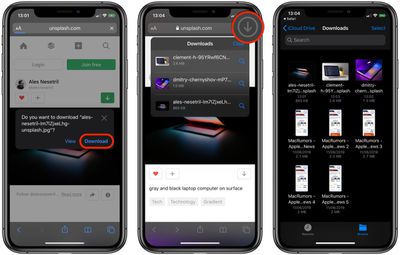
Get weekly top MacRumors stories in your inbox.
Popular Stories
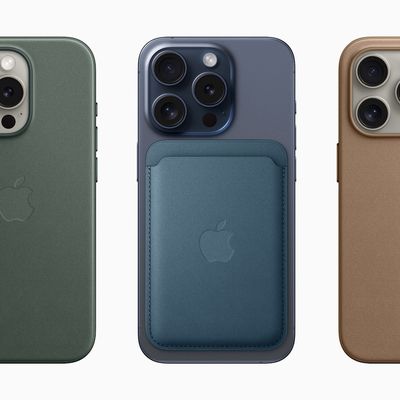
Apple Reportedly Stops Production of FineWoven Accessories

PlayStation and SEGA Emulator for iPhone and Apple TV Coming to App Store [Updated]

iOS 17.5 Will Add These New Features to Your iPhone
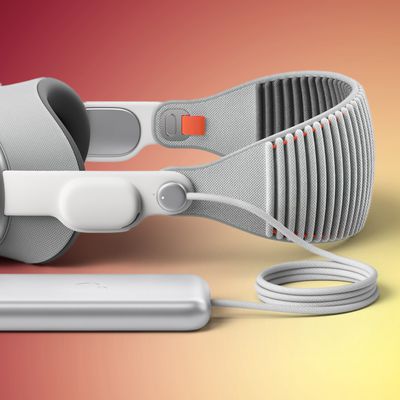
Apple Vision Pro Customer Interest Dying Down at Some Retail Stores

Top Stories: Nintendo Emulators on App Store, Two New iOS 17 Features, and More
Next article.

Our comprehensive guide highlighting every major new addition in iOS 17, plus how-tos that walk you through using the new features.

App Store changes for the EU, new emoji, Podcasts transcripts, and more.

Get the most out your iPhone 15 with our complete guide to all the new features.
A deep dive into new features in macOS Sonoma, big and small.

Revamped models with OLED displays, M3 chip, and redesigned Magic Keyboard accessory.

Updated 10.9-inch model and new 12.9-inch model, M2 chip expected.

Apple's annual Worldwide Developers Conference will kick off with a keynote on June 10.

Expected to see new AI-focused features and more. Preview coming at WWDC in June with public release in September.
Other Stories

11 minutes ago by Tim Hardwick

31 minutes ago by Tim Hardwick

1 hour ago by Tim Hardwick

2 hours ago by Tim Hardwick

13 hours ago by MacRumors Staff
Where Do I Find My Downloads on My iPhone?
What to know.
- When downloading files from Safari, a Downloads button will appear, which shows any files you’ve downloaded in the past day.
- Open the Settings app > Safari > Downloads to choose whether your downloads are stored on your iPhone or in iCloud.
- To find all of your downloaded files, open the Files app > On My iPhone or iCloud Drive > Downloads.
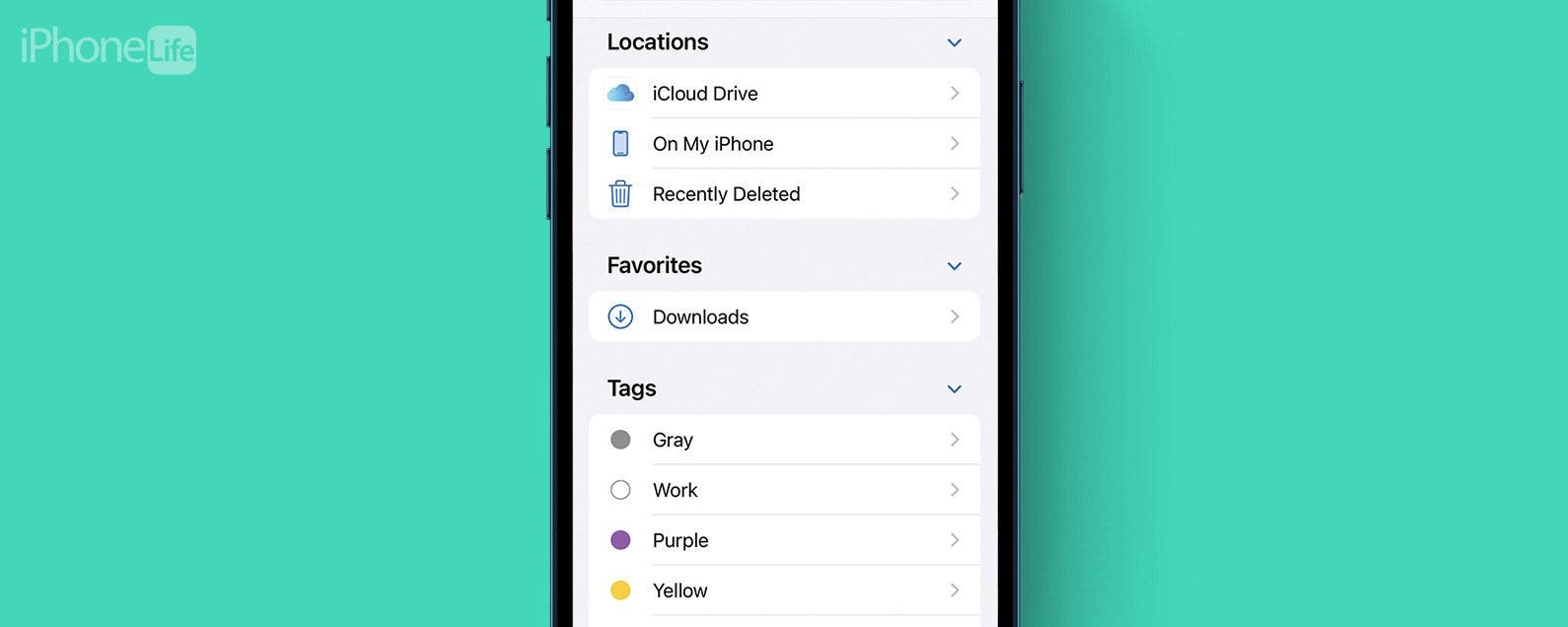
Like any web browser, you can use Safari to download files to your iPhone. But where do those downloads go after you save them? In this article, we’ll go over how exactly to find out where your downloaded files are located.
How to Get to Downloads on iPhone
How to find safari downloads on iphone, how to get to downloads using the files app.
Finding your downloaded files on iPhone can be a bit challenging since the Downloads button in Safari only appears when downloading files. For more ways to master Safari, like how to block or allow pop-ups , be sure to sign up for our Tip of the Day newsletter. Now, here’s how you can see the files that you downloaded in the last day.
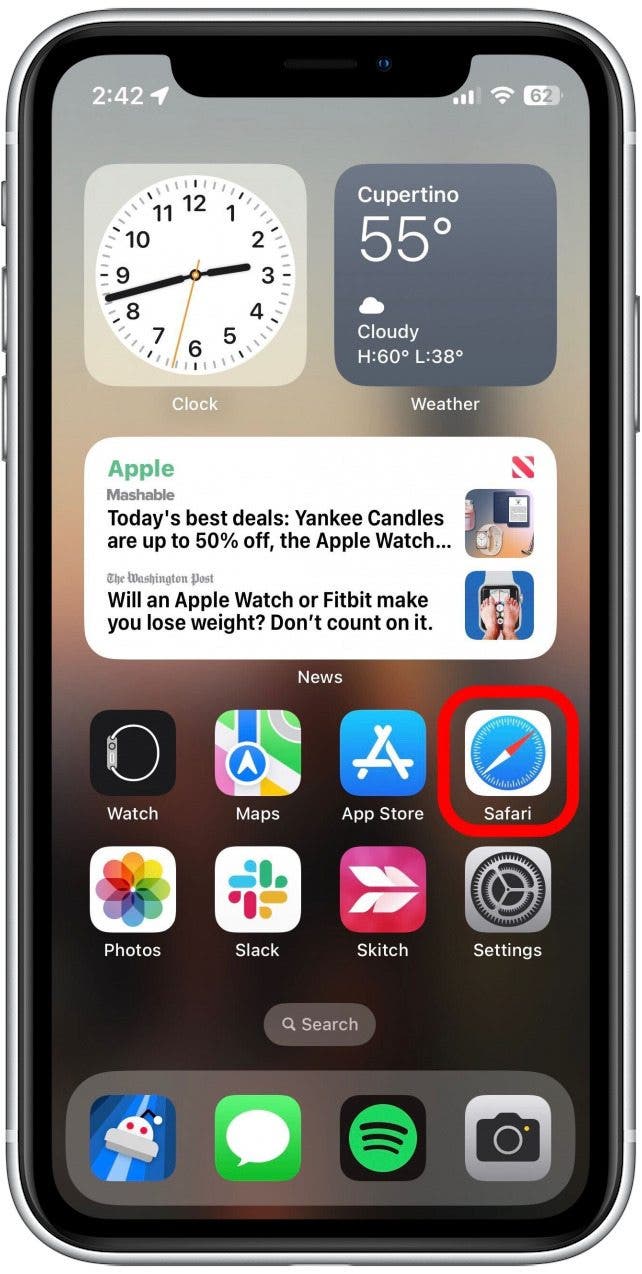
By default, Safari is set up so that this list will be cleared out after one day. This does not remove the downloaded file from your phone, but it will remove the downloads list from Safari. If you haven’t downloaded anything else in the last day, you likely won’t see it here. To access all of your downloads, you’ll need to head over to the Files app.

If you haven’t downloaded anything recently or if you use another web browser, you can access your downloads in the Files app. But first, you need to check your Safari settings to find out if your Downloads folder is stored on your iPhone or in iCloud:
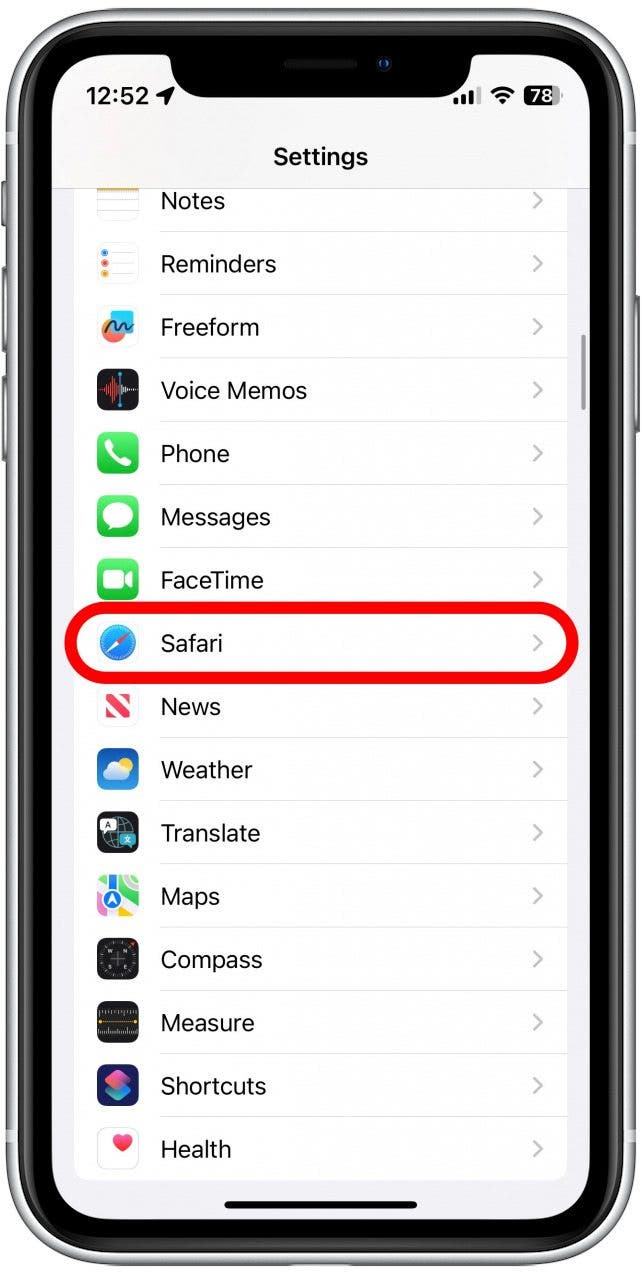
Regardless of where your downloaded files are stored, you will be able to access them from the Files app.
Now that you know where your Downloads folder is stored, let’s move over to the Files app to see how to get to Downloads on iPhone:
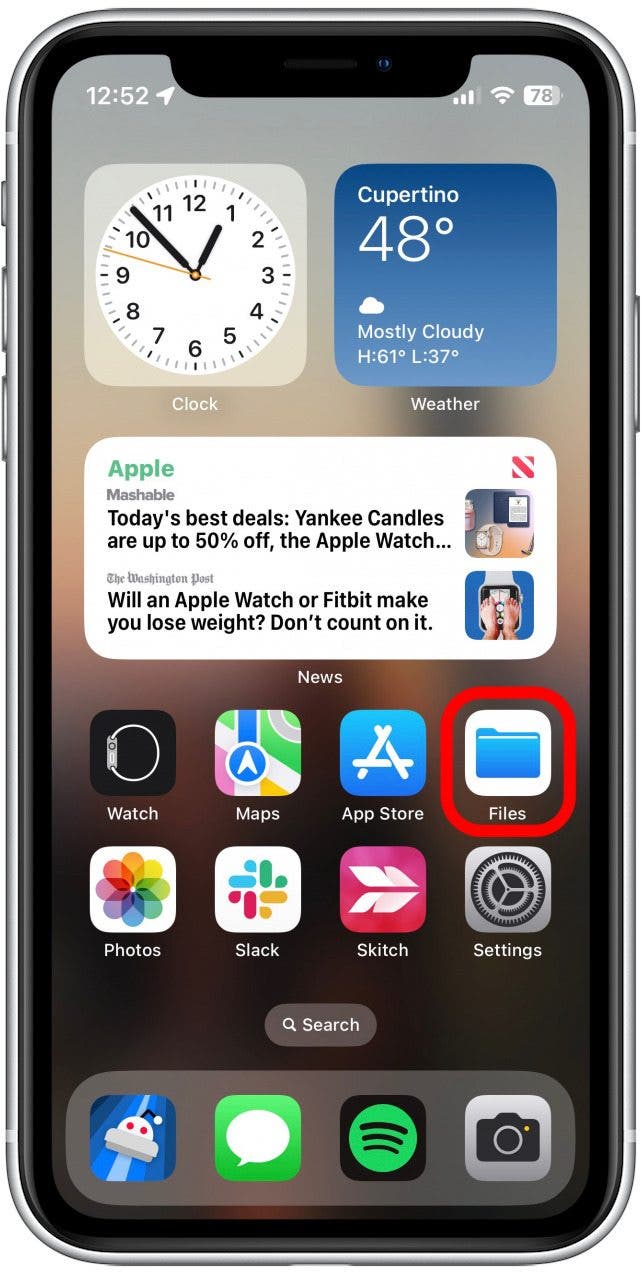
Note : If you use another web browser, you will see a folder for it in the On My iPhone folder (e.g. you will see a Firefox folder or a Chrome folder if you use those browsers). Your downloads from those browsers will be stored there.
That’s how to find your downloaded files on your iPhone! In the future, the quickest way to access your downloads is by going to the Files app. You can also save items from other apps to your Files app. Next, find out how to send large files on iPhone or iPad .
Author Details

Rhett Intriago
Rhett Intriago is a Feature Writer at iPhone Life, offering his expertise in all things iPhone, Apple Watch, and AirPods. He enjoys writing on topics related to maintaining privacy in a digital world, as well as iPhone security. He’s been a tech enthusiast all his life, with experiences ranging from jailbreaking his iPhone to building his own gaming PC.
Despite his disdain for the beach, Rhett is based in Florida. In his free time, he enjoys playing the latest games, spoiling his cats, or discovering new places with his wife, Kyla.

Featured Products
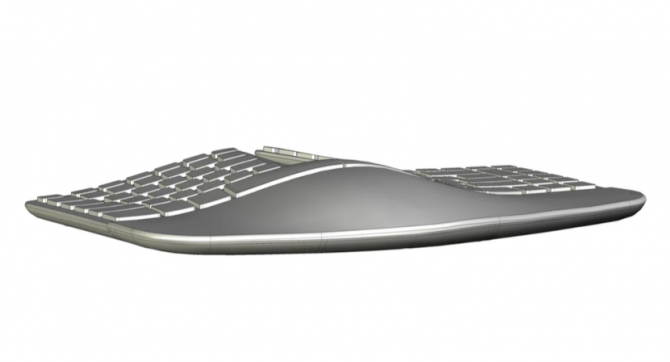
Most Popular

How to Tell If Someone Blocked Your Number on iPhone

iPhone Alarm Volume Low? How to Make an iPhone Alarm Louder

10 Simple Tips To Fix iPhone Battery Drain

How to Schedule a Text Message on iPhone

How to Tell If a Dead iPhone Is Charging

How To Put Two Pictures Together on iPhone
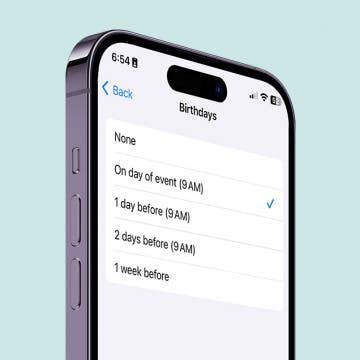
How to Get Automatic Birthday Reminders on iPhone

How to Hide an App on Your iPhone
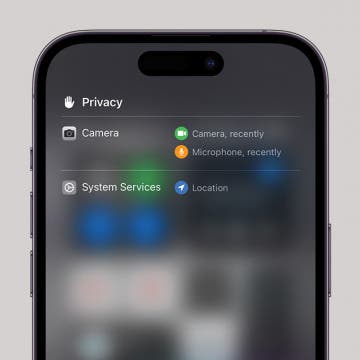
Find Out Which App Is Using Your Camera or Microphone
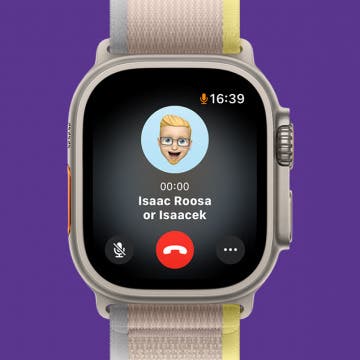
How to Transfer Call from Apple Watch to iPhone

How To Turn Off Flashlight on iPhone (Without Swiping Up!)

Why Is Find My iPhone Not Working? Here’s the Real Fix
Featured articles, why is my iphone battery draining so fast 13 easy fixes.

Identify Mystery Numbers: How to Find No Caller ID on iPhone

Apple ID Not Active? Here’s the Fix!

How to Cast Apple TV to Chromecast for Easy Viewing

Fix Photos Not Uploading to iCloud Once & for All (iOS 17)

There Was an Error Connecting to the Apple ID Server: Fixed

CarPlay Not Working? 4 Ways to Fix Apple CarPlay Today
Check out our sponsors.

- Each email reveals new things you can do with your phone (and other devices) with easy-to-follow screenshots.
- Enter your email to get your first tip immediately!
- Apple Watch
- Accessories
- Digital Magazine – Subscribe
- Digital Magazine – Log In
- Smart Answers
- New iPad Air
- iPad mini 7
- Next Mac Pro
- Best Mac antivirus
- Best Mac VPN
When you purchase through links in our articles, we may earn a small commission. This doesn't affect our editorial independence .
Where to find Safari’s downloads list
A few readers have asked about the downloads list in macOS Safari—in particular, how to find it when the button is missing and where to find entries for older downloads.
While it seems like a simple matter of clicking a button and scrolling, Apple added some sophistication that has tripped people up. In earlier versions of Safari, the Downloads button was always present and all previous downloads appeared in a list. You could click a button to clear the list or use other history-wiping tools to erase it.
In the most recent Safari releases for OS X and macOS Sierra, the Downloads only appears when there are items in a list, and you can choose to age out the entries.
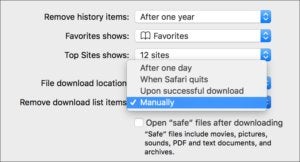
Safari lets you expire the downloads list in three ways, or keep it around until you opt to clear it.
In Safari > Preferences, the General tab offers Remove Download List Items as a pop-up menu with choices of After One Day, When Safari Quits, Upon Successful Download, and Manually. While I don’t recall ever changing this option, it’s set to After One Day on my main computer; Apple may have chosen that for us as an option when the item was added as a preference.
Thus, if you have any of the options except Manually checked, the Downloads button will routinely disappear. If you’re relying on that list as a record of what you’ve downloaded in the past, make sure the option is set to Manually.
This has something to do with privacy, of course. By dumping the list routinely or in certain cases, Apple ensures that less information about your behavior gets retained for later examination—although if someone can get close enough to my machine to check out my Downloads list, they’re also likely to be able to access my Downloads folder.
Ask Mac 911
We’ve compiled a list of the most commonly asked questions we get, and the answers to them: read our super FAQ to see if you’re covered. If not, we’re always looking for new problems to solve! Email yours to [email protected] including screen captures as appropriate. Mac 911 cannot reply to email with troubleshooting advice nor can we publish answers to every question.
Author: Glenn Fleishman , Senior Contributor

Glenn Fleishman ’s most recent books include Take Control of iOS and iPadOS Privacy and Security , Take Control of Calendar and Reminders , and Take Control of Securing Your Mac . In his spare time, he writes about printing and type history . He’s a senior contributor to Macworld , where he writes Mac 911.
Recent stories by Glenn Fleishman:
- How to find out what devices are logged into your iCloud account
- How to make noncontiguous selections in Pages, Numbers, and Keynote
- Satechi USB-C Multiport V3 hub review: A pint-sized powerhouse
Maintenance mode is on
Site will be available soon. Thank you for your patience!

Looks like no one’s replied in a while. To start the conversation again, simply ask a new question.
Where to find downloads from Safari
Ive downloaded few files in Safari.. but can’t find it in my files or media.. where to look for ?
Posted on Nov 11, 2021 10:06 PM
Similar questions
- Why doesn't safari have a list of downloaded files? I would like to see a list of downloaded files in case some bad website forced me to download a file. I'm using Safari Version 13.0.2. 231 3
- i am unable to download the exact file from safari I am unable to download any files from safari. 508 1
- How do I check downloads\documents for safari on iphone Hello fellos, May you guys please let me know where I can find documents/ downloads that I download from safari. Thanks ! 158 4
Loading page content
Page content loaded
Nov 12, 2021 4:57 PM in response to 11maddy38
Hi 11maddy38,
Thanks for posting in Apple Support Communities. We understand that you're having some issues locating the files that you downloaded in Safari on your Mac.
To change where downloaded files are saved on your Mac, go to Safari > Preferences > General > File download location. When you do this, you can also see which folder was selected previously and that folder is where you'll find your downloads. You can find these and other tips from Download items from the web using Safari on Mac .
- Dragon’s Dogma 2
- Genshin Impact
- Honkai Star Rail
- Lego Fortnite
- Stardew Valley
- NYT Strands
- NYT Connections
- Apple Watch
- Crunchyroll
- Prime Video
- Jujutsu Kaisen
- Demon Slayer
- Chainsaw Man
- Solo Leveling
- Beebom Gadgets
How to Find Downloads on iPad [2024 Guide]
- Generally, you can find most downloads on the iPad in the Downloads folder located within the Files app .
- Open Files -> iCloud Drive -> Downloads to find saved files and PDFs on your iPad.
- You can also find the downloaded files within their corresponding app.
Find Downloads in Files app
- On My [Device] folder has files stored locally on the Apple device you’re using.
- iCloud Drive folder has all the files and folders that are synced to iCloud Drive. This includes Numbers, Pages, Keynote documents, and more.
- The Files app also stores files in other cloud services and apps that you’re using, such as Google Drive, Dropbox, One Drive, and more.
Now that you know the basics, follow the below steps to find saved PDFs on your iPad:
- Open the Files app on your iPad.
- In case you don’t find it on the home screen, swipe down from the middle to open Spotlight Search. Then, type “files” in the search bar and select “ Files “.
- Now, tap on the small icon present in the leftmost corner to reveal the left sidebar.

- Next, tap on iCloud Drive.

- Here, tap on the Downloads folder to see your saved files on your iPad.
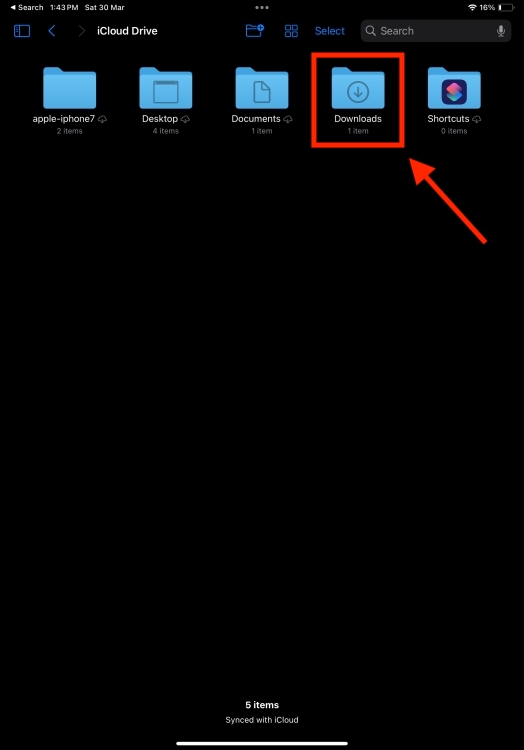
Find Downloaded Apps on iPad
- On your iPad’s home screen, keep swiping left until you see the App Library . It has all the apps, automatically sorted in helpful categories.
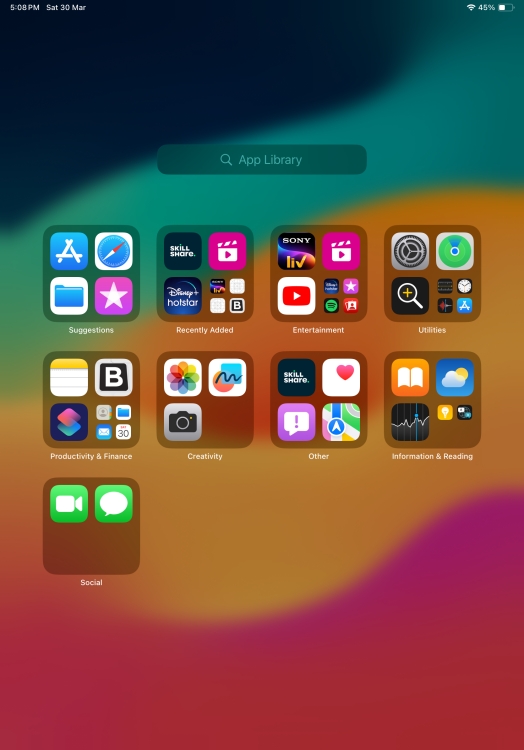
- If you feel the categories are too cluttered, tap on the “App Library” to see the alphabetized list of your iPad apps.

- You can also search for a specific app using the search bar at the top.
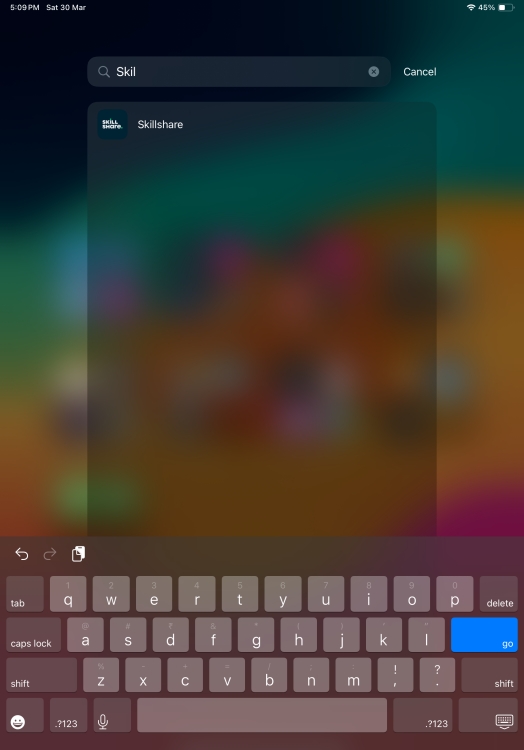
Find Downloaded Photos on iPad
You can also use the top search bar to find specific photos on your iPad. This is one of the most useful hidden iOS tricks that can make your life easier. Here’s how to search for a specific image in the Photos app:
- In the Photos app , tap on the Menu icon from the left-most corner to see the left sidebar, and tap on the Search option.
- If you wish to find a photo that was taken from your friend’s iPhone 15, start typing iPhone and tap the iPhone model from the drop-down menu.

- This will reveal all the pictures from that particular iPhone model.
- You can also use this method to find photos downloaded from Safari on your iPhone.
Find Downloads in Safari
- Open the Safari app on your iPad.
- Tap on the download icon present on the right of the search field.
- This will bring up your recent downloads.

- On your iPad, go to Settings -> Safari -> Downloads .
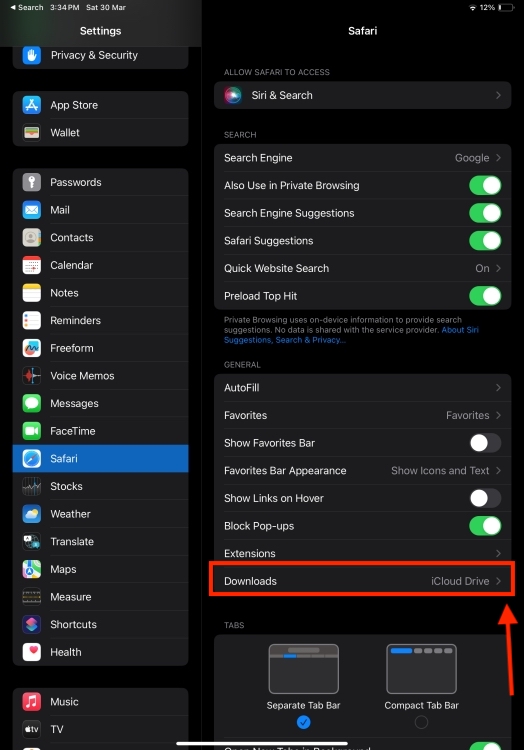
- Here, tap on Remove Downloaded List Items and choose a suitable option from After one day, Upon successful download, or Manually.

Kanika Gogia
Kanika has been a loyal iPhone user since 2014 and loves everything Apple. With a Master’s in Computer Applications, passion for technology, and over five years of experience in writing, she landed at Beebom as an Apple Ecosystem Writer. She specializes in writing How To’s, troubleshooting guides, App features, and roundups for Apple users to help them make the best use of their gadgets. When not writing, she loves to try out new recipes and enjoy some family time.
Add new comment

How To Find Download On Mac

- How-To Guides
- Tech Setup & Troubleshooting
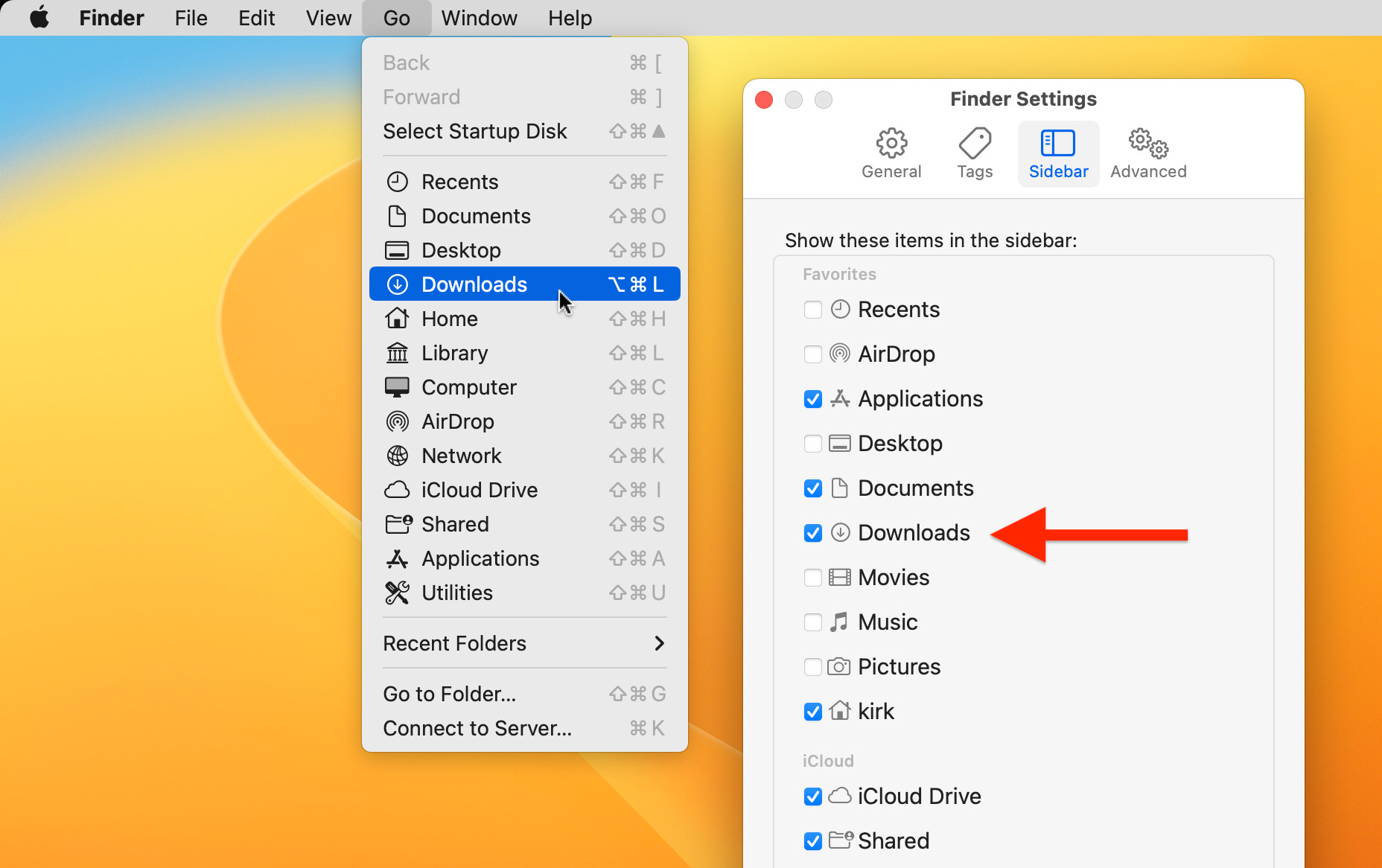
Introduction
Whether you’re a seasoned Mac user or new to the world of macOS, finding and managing your downloads is an essential skill. With the abundance of files we download every day, it’s easy for them to get lost in the shuffle. Thankfully, there are several methods you can use to locate your downloaded files on your Mac.
In this article, we will explore various ways to find and manage your downloads on a Mac. From checking the Downloads folder to using search functions in browsers and accessing download histories, we will cover all the bases. So, if you’re ready to take control of your downloaded files, let’s dive in!
Before we begin with the different methods, it’s important to note that the steps provided in this article are based on the latest versions of macOS and popular web browsers such as Safari, Google Chrome, and Mozilla Firefox. If you have an older version of macOS or a different browser, the steps might vary slightly.
Now, let’s explore the multiple approaches you can take to easily locate and manage your downloaded files on your Mac.
Checking the Downloads Folder
One of the most straightforward methods to find your downloaded files on a Mac is by checking the Downloads folder. When you download a file, it is often saved to this default folder unless you specify a different location.
To access the Downloads folder, follow these simple steps:
- Click on the magnifying glass icon in the top right corner of your screen to open Spotlight Search.
- Type “Downloads” in the search bar and press Enter.
- The Downloads folder will appear in the search results. Click on it to open the folder.
Alternatively, you can also access the Downloads folder through the Finder:
- Open a Finder window by clicking on the Finder icon in your Dock or by pressing Command + N.
- In the left sidebar, you will find a list of shortcuts. Click on “Downloads” to open the folder.
Once you have accessed the Downloads folder, you can browse through the files and organize them according to your preference. You can also use the search bar at the top right corner of the Finder window to locate specific files by name.
It’s important to periodically clear out your Downloads folder to free up storage space on your Mac. You can do this by selecting the files you no longer need and dragging them to the Trash or by right-clicking on the files and selecting “Move to Trash.”
Remember that files in the Downloads folder are stored locally on your Mac’s hard drive. If you delete a file from this folder, it will be permanently removed from your system unless you have a backup. Therefore, make sure to double-check the files you are deleting to avoid losing important data.
Using the Finder Search
If you are unable to locate a specific file in the Downloads folder, you can use the Finder search function to quickly find it. The Finder search allows you to search for files based on various criteria, including file name, file type, and date modified.
To use the Finder search to locate your downloaded files, follow these steps:
- Click on the search bar at the top right corner of the Finder window. This will activate the search function.
- Type in the name or a keyword related to the file you are looking for. For example, if you downloaded a Word document, you can type “.docx” to filter for that file type.
- As you type, the search results will automatically update to display the matching files. You can further refine the search results by using the options provided below the search bar, such as “Kind” or “Date Modified”.
If you still can’t find the file you’re looking for, make sure to check that you haven’t accidentally selected a specific location within the Finder search parameters. You can do this by clicking on “This Mac” under the search bar, which will search your entire computer instead of just a specific folder or location.
The Finder search function is a powerful tool that can help you quickly locate and retrieve your downloaded files. It’s especially useful when you have a large number of downloads or when you need to find a specific file among multiple folders and locations on your Mac.
By mastering the Finder search, you can save time and effort in searching for your downloaded files, allowing you to focus on your tasks and projects without the frustration of manually browsing through folders.
Searching in Safari
If you frequently use Safari as your web browser on your Mac, you can take advantage of its built-in search feature to find your downloaded files. Safari provides a convenient way to search for specific downloads within the browser itself.
To search for downloaded files in Safari, follow these steps:
- Open Safari on your Mac.
- In the top menu, click on “History” and then select “Show Downloads” from the dropdown menu. Alternatively, you can use the keyboard shortcut Option + Command + L.
- A Downloads window will appear, displaying a list of your recent downloads.
- At the top right corner of the Downloads window, you will find a search bar. Here, you can enter keywords or the name of the file you are looking for.
- As you type, the Downloads window will filter the results and display only the files that match your search query.
- If you want to clear the search and view all the downloads again, you can click on the “x” button at the right side of the search bar or simply delete the text in the search bar and press Enter.
Using Safari’s built-in search feature is a quick and efficient way to locate specific downloads without needing to open the Downloads folder or use external search functions. It’s especially useful when you remember the file’s name or some keywords related to it.
Additionally, the Downloads window in Safari also provides useful information about each file, such as the file name, file size, and the date it was downloaded. This can help you easily identify the desired file among your download history.
By utilizing Safari’s search feature, you can save time and effort in locating your downloaded files, ensuring that you can access them whenever you need them.
Searching in Google Chrome
If you’re a Google Chrome user, you can leverage the browser’s search functionality to quickly locate your downloaded files. Google Chrome provides a seamless way to search for specific downloads within the browser itself.
To search for downloaded files in Google Chrome, follow these steps:
- Open Google Chrome on your Mac.
- In the top menu, click on the three-dot icon to open the menu, then select “Downloads” from the dropdown menu. Alternatively, you can use the keyboard shortcut Command + Shift + J.
- A new tab will open, displaying your download history in Chrome.
- At the top right corner of the Downloads tab, you will find a search bar. Here, you can enter keywords or the name of the file you are looking for.
- As you type, Google Chrome will filter the results and display only the files that match your search query.
Using Google Chrome’s built-in search feature makes it convenient to find specific downloads without the need to navigate through multiple folders or use external search functions. It’s especially helpful when you know the file’s name or certain keywords related to it.
Furthermore, the Downloads tab in Google Chrome provides additional details about each file, such as the file name, file size, and the date it was downloaded. This information can assist you in quickly identifying the desired file from your download history.
By taking advantage of Google Chrome’s search feature, you can save time and streamline the process of locating your downloaded files, ensuring that you can access them whenever you need them.
Searching in Mozilla Firefox
If you prefer using Mozilla Firefox as your web browser on your Mac, you can utilize its search functionality to locate your downloaded files. Firefox provides a convenient way to search for specific downloads within the browser itself.
To search for downloaded files in Mozilla Firefox, follow these steps:
- Open Mozilla Firefox on your Mac.
- In the top menu, click on the three-line icon to open the menu, then select “Library” and click on “Downloads”. Alternatively, you can use the keyboard shortcut Command + Shift + Y.
- A new tab will open, displaying your download history in Firefox .
- As you type, Mozilla Firefox will filter the results and display only the files that match your search query.
By using Mozilla Firefox’s built-in search feature, you can easily find specific downloads without the need to navigate through folders or use external search tools. This feature is particularly useful when you remember the file’s name or have specific keywords related to it.
Additionally, the Downloads tab in Mozilla Firefox provides useful information about each file, including the file name, file size, and the date it was downloaded. This way, you can quickly identify the desired file from your download history.
By leveraging the search feature in Mozilla Firefox, you can save time and effort in locating your downloaded files, ensuring that you can access them whenever you need them.
Checking Download History in Safari
If you are using Safari as your web browser on your Mac, you can easily review your download history to locate files you have previously downloaded. Checking the download history in Safari allows you to quickly find and manage your downloaded files.
To check your download history in Safari, follow these steps:
- In the top menu, click on “History.”
- A dropdown menu will appear. Towards the bottom of the menu, you will find the “Show All History” option. Click on it.
- A new window will open, displaying your browsing history.
- In the search bar at the top right corner of the history window, you can enter keywords or the name of the file you want to find.
- As you type, Safari will filter the results and display only the history entries that match your search query.
- Scroll through the list to find the specific download you are looking for.
When you locate the desired download in your history, you can click on it to open the file in Safari’s Downloads window. From there, you can access the file and perform actions such as opening or deleting it.
It’s important to note that the download history in Safari only stores the records of files you have downloaded. If you have deleted a file from your Downloads folder, it will no longer appear in the download history.
By checking your download history in Safari, you can easily keep track of the files you have downloaded and quickly retrieve them when needed.
Checking Download History in Google Chrome
If you are using Google Chrome as your web browser on your Mac, you can easily access your download history to view and manage your downloaded files. Checking the download history in Google Chrome allows you to conveniently locate and organize your downloads.
To check your download history in Google Chrome, follow these steps:
- In the top menu, click on the three-dot icon to open the menu.
- From the menu, hover your cursor over “Downloads” and click on it.
- A new tab will open, displaying your download history in Google Chrome.
- You can scroll through the list to find the specific download you are looking for.
- If you want to search for a specific download, you can use the search bar at the top right corner of the Downloads tab. Simply enter keywords or the name of the file you want to find, and the list will be filtered accordingly.
- Clicking on a downloaded file will open it in the default application associated with its file type, allowing you to access and work with the file.
The download history in Google Chrome provides a record of all the files you have downloaded using the browser. It includes details such as the file name, file size, and the date and time of the download. This information can be helpful in quickly identifying and managing your downloaded files.
It’s worth noting that Google Chrome retains your download history even after you have deleted the downloaded files from your computer. Therefore, you can still access the record of your downloads even if the actual files are no longer present in your system.
By checking your download history in Google Chrome, you can easily keep track of your downloaded files, find specific downloads, and perform necessary actions on them according to your needs.
Checking Download History in Mozilla Firefox
If you use Mozilla Firefox as your web browser on your Mac, you have the ability to access your download history within the browser. Reviewing your download history in Mozilla Firefox allows you to easily track and manage your downloaded files.
Here’s how you can check your download history in Mozilla Firefox:
- Launch Mozilla Firefox on your Mac.
- In the top menu, click on the three-line icon to open the menu.
- From the menu, select “Library” and then click on “Downloads.”
- A new tab will open, displaying your download history in Mozilla Firefox.
- If you want to search for a particular download, you can use the search bar at the top right corner of the Downloads tab. Enter keywords or the name of the file you are searching for, and the list will be filtered accordingly.
- Clicking on a downloaded file will open it or reveal it in Finder, depending on its file type and your system settings.
The download history in Mozilla Firefox provides details about each downloaded file, including the file name, file size, and the date and time it was downloaded. This information can assist you in quickly identifying and managing your downloaded files.
Note that the download history in Mozilla Firefox retains a record of your downloads even if you have deleted the downloaded files from your computer. Therefore, you can still access the history of your downloads, even if the actual files are no longer present in your system.
By navigating through your download history in Mozilla Firefox, you can easily keep track of your downloads, locate specific files, and take appropriate actions to manage and organize them according to your preferences.
Using Spotlight Search
If you are using a Mac, one powerful tool at your disposal is Spotlight Search. This built-in feature allows you to search your entire computer, including your downloads, with just a few keystrokes. Using Spotlight Search can save you time and effort by quickly locating specific downloaded files.
Here’s how you can use Spotlight Search to find your downloaded files:
- Press Command + Spacebar to activate Spotlight Search.
- A search bar will appear in the center of your screen.
- Type in the name of the file you want to find or related keywords.
- As you type, Spotlight Search will start displaying results in real-time below the search bar.
- Look for the “Documents” category in the search results and click on it to expand.
- Scroll through the search results to find the downloaded file you are looking for.
- Once you locate the file, you can click on it to open it or access its location in Finder.
Spotlight Search is incredibly versatile, allowing you to find files across your entire Mac, not just in specific folders. This makes it an efficient way to locate downloaded files, even if you don’t remember the specific location where they were saved.
Additionally, Spotlight Search also supports advanced search operators, such as file type filters (e.g., “kind:pdf”) or date filters (e.g., “created:yesterday”). These operators can help you narrow down your search results and find your downloaded files more quickly.
By leveraging the power of Spotlight Search, you can effortlessly locate your downloaded files, saving yourself the time and hassle of manually searching through different folders on your Mac.
Using Terminal
If you’re comfortable working with the command line interface, you can utilize Terminal to efficiently locate and manage your downloaded files on a Mac. Terminal provides a powerful way to interact with your system and perform various tasks, including finding specific files.
Here’s how you can use Terminal to search for downloaded files:
- Open Terminal on your Mac.
- Type the following command and press Enter: cd ~/Downloads
- This command will change the working directory to your Downloads folder.
- Next, you can use various commands to search for files, such as:
- ls – Lists all the files and folders in the current directory.
- ls -l – Lists files and folders in a detailed format (including permissions, size, and modification date).
- ls -a – Lists all files and folders, including hidden ones.
- find . -name "filename" – Searches for a file with a specific name in the current directory and its subdirectories. Replace “filename” with the actual name of the file you’re looking for.
Using Terminal gives you precise control over your search commands and allows for advanced filtering and sorting options. It’s particularly useful when you need to perform complex searches or when you’re familiar with specific Unix commands.
In addition to searching for files, Terminal also allows you to perform various file management operations, such as moving, copying, deleting, and renaming files. This gives you full control over organizing and managing your downloaded files directly from the command line.
Remember to exercise caution when using Terminal, as commands can have significant system-level effects. Double-check your commands before executing them, especially when deleting or modifying files, to avoid unintended consequences.
By leveraging the power of Terminal, you can efficiently search for and manage your downloaded files on your Mac, taking advantage of the flexibility and control that the command line provides.
Locating and managing your downloaded files on a Mac is vital for staying organized and accessing important documents, media files, and more. In this article, we explored various methods to help you find your downloaded files effectively.
We started by checking the Downloads folder, the default location where downloaded files are often saved. By accessing this folder, you can easily browse through your downloads and organize them as needed. Additionally, we explored how to use the Finder search function to search for specific files based on criteria such as file name and file type.
We then delved into searching for downloaded files in popular web browsers such as Safari, Google Chrome, and Mozilla Firefox. Each browser provides built-in search features that allow you to search your download history and quickly locate specific files. This can be incredibly useful when you remember keywords related to the file or its name.
Moreover, we discussed how to leverage Spotlight Search, a powerful tool on macOS, to search your entire computer, including downloaded files. This method is ideal when you need to find files scattered across different folders and locations.
Lastly, we explored using Terminal, the command line interface on a Mac, to search for and manage downloaded files. Terminal offers advanced control, allowing for precise search commands and file manipulation operations.
By utilizing these various methods, you can save time and effort in locating your downloaded files on your Mac. Remember to regularly clear out unnecessary files from your Downloads folder to free up storage space and keep your system running smoothly.
Whether you prefer the simplicity of browsing your Downloads folder, the convenience of browser-specific search functions, the versatility of Spotlight Search, or the power of Terminal, there’s a method that suits your preferences and workflow. Experiment with these techniques to find the most efficient way to manage your downloaded files on your Mac.
Leave a Reply Cancel reply
Your email address will not be published. Required fields are marked *
Save my name, email, and website in this browser for the next time I comment.
- Crowdfunding
- Cryptocurrency
- Digital Banking
- Digital Payments
- Investments
- Console Gaming
- Mobile Gaming
- VR/AR Gaming
- Gadget Usage
- Gaming Tips
- Online Safety
- Software Tutorials
- Tech Setup & Troubleshooting
- Buyer’s Guides
- Comparative Analysis
- Gadget Reviews
- Service Reviews
- Software Reviews
- Mobile Devices
- PCs & Laptops
- Smart Home Gadgets
- Content Creation Tools
- Digital Photography
- Video & Music Streaming
- Online Security
- Online Services
- Web Hosting
- WiFi & Ethernet
- Browsers & Extensions
- Communication Platforms
- Operating Systems
- Productivity Tools
- AI & Machine Learning
- Cybersecurity
- Emerging Tech
- IoT & Smart Devices
- Virtual & Augmented Reality
- Latest News
- AI Developments
- Fintech Updates
- Gaming News
- New Product Launches
- Fintechs and Traditional Banks Navigating the Future of Financial Services
- AI Writing How Its Changing the Way We Create Content
Related Post
How to find the best midjourney alternative in 2024: a guide to ai anime generators, unleashing young geniuses: how lingokids makes learning a blast, 10 best ai math solvers for instant homework solutions, 10 best ai homework helper tools to get instant homework help, 10 best ai humanizers to humanize ai text with ease, sla network: benefits, advantages, satisfaction of both parties to the contract, related posts.

How To Download Games On Mac For Free
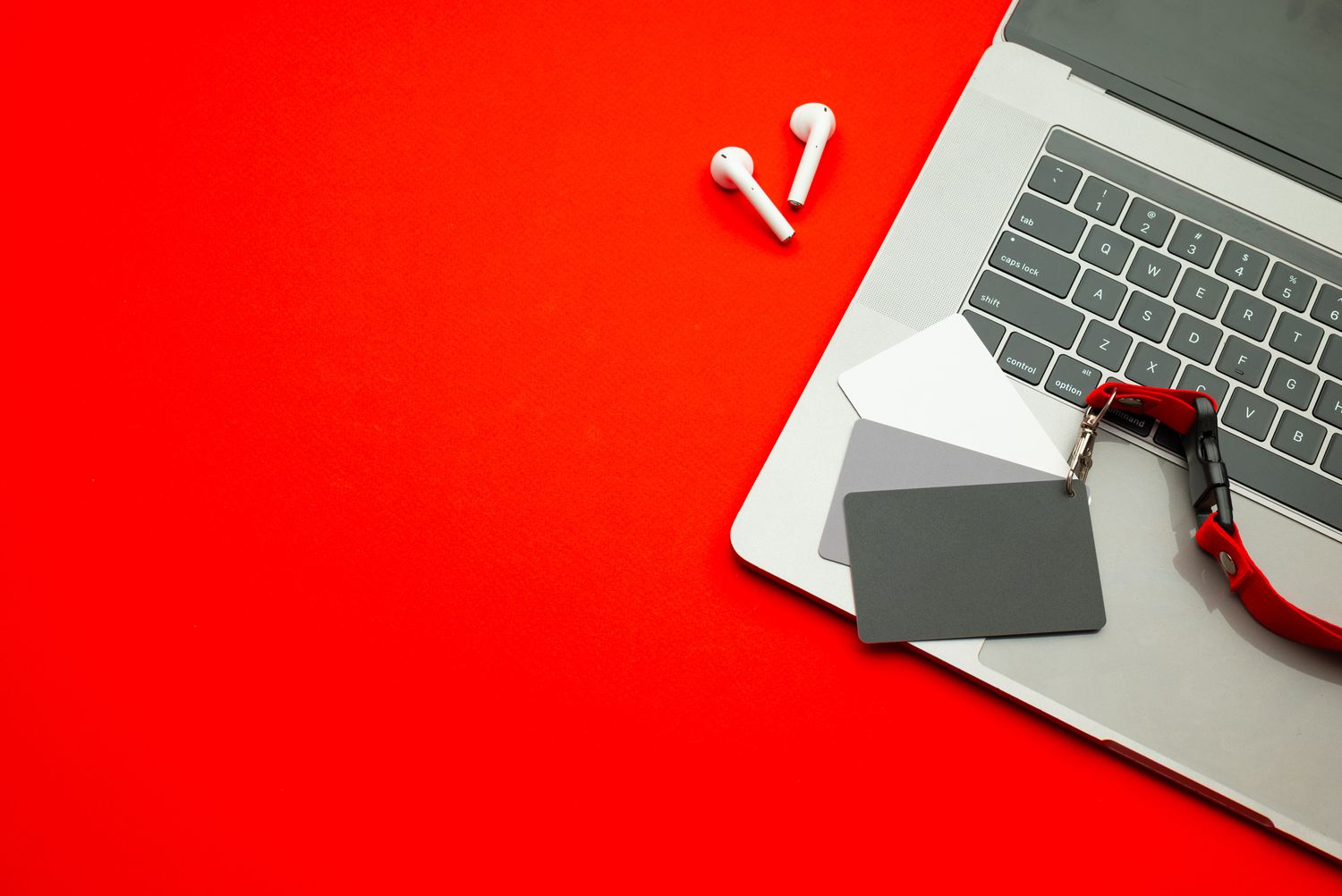
How To Download Youtube Videos On A Mac

How To Download Videos From Amazon Prime To Mac
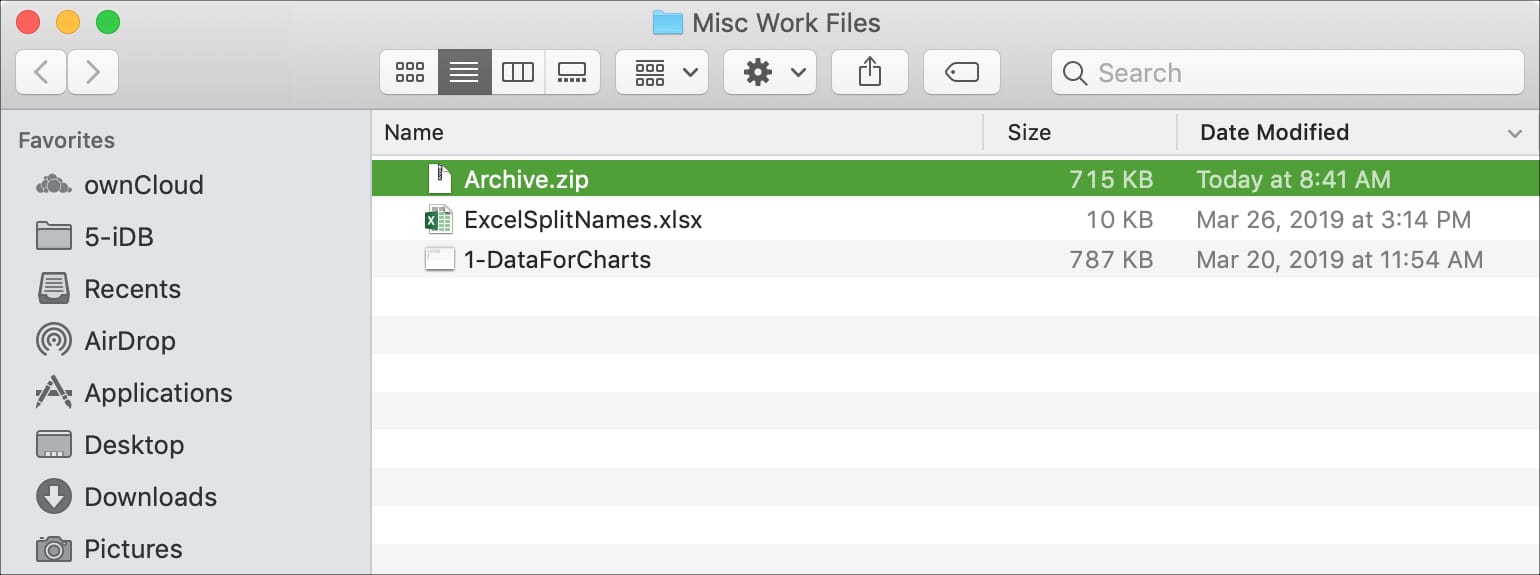
How To Download A Zip File On Mac

How To Download IOS Games On Mac
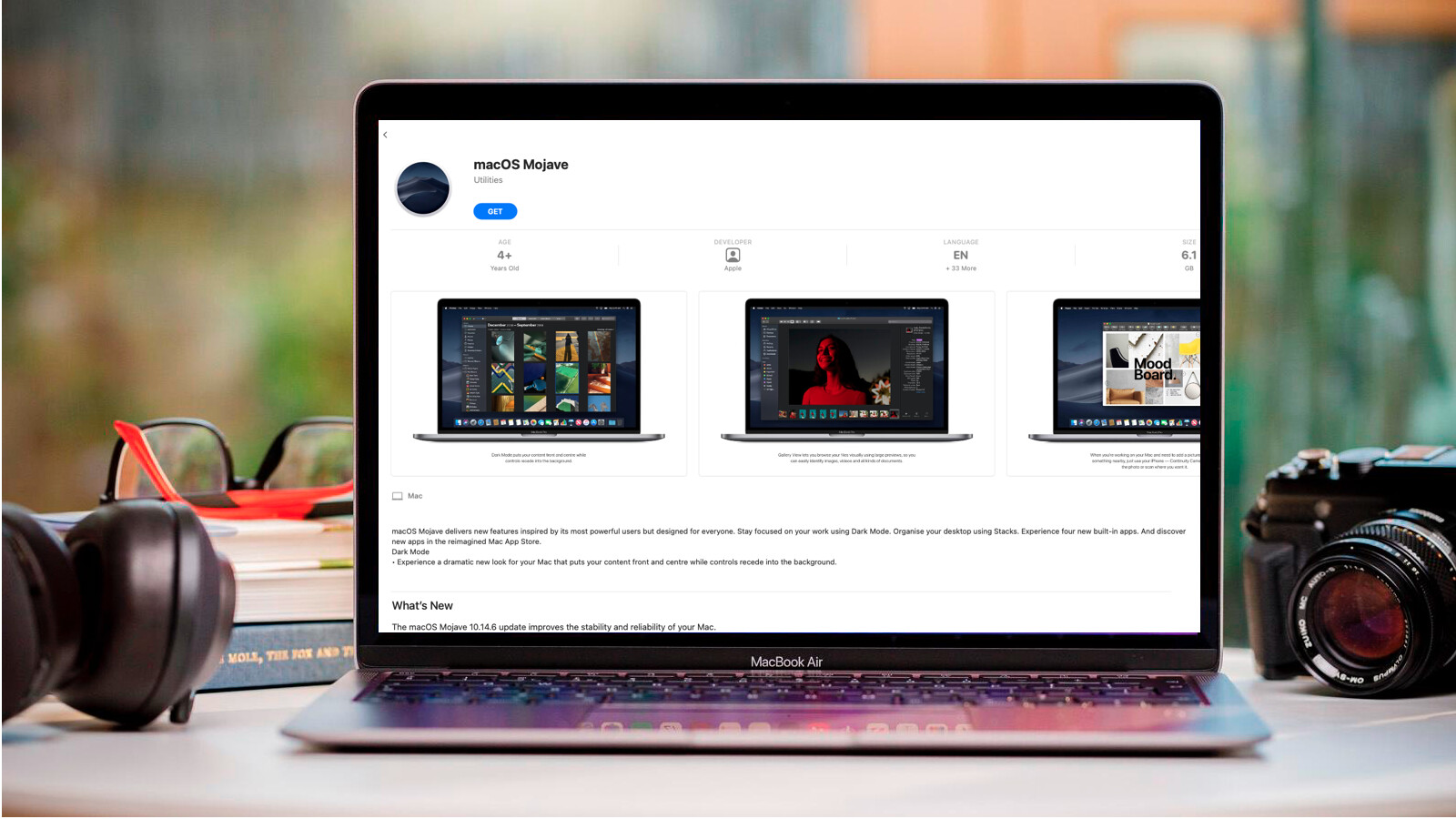
How To Download Older Version Of Mac OS
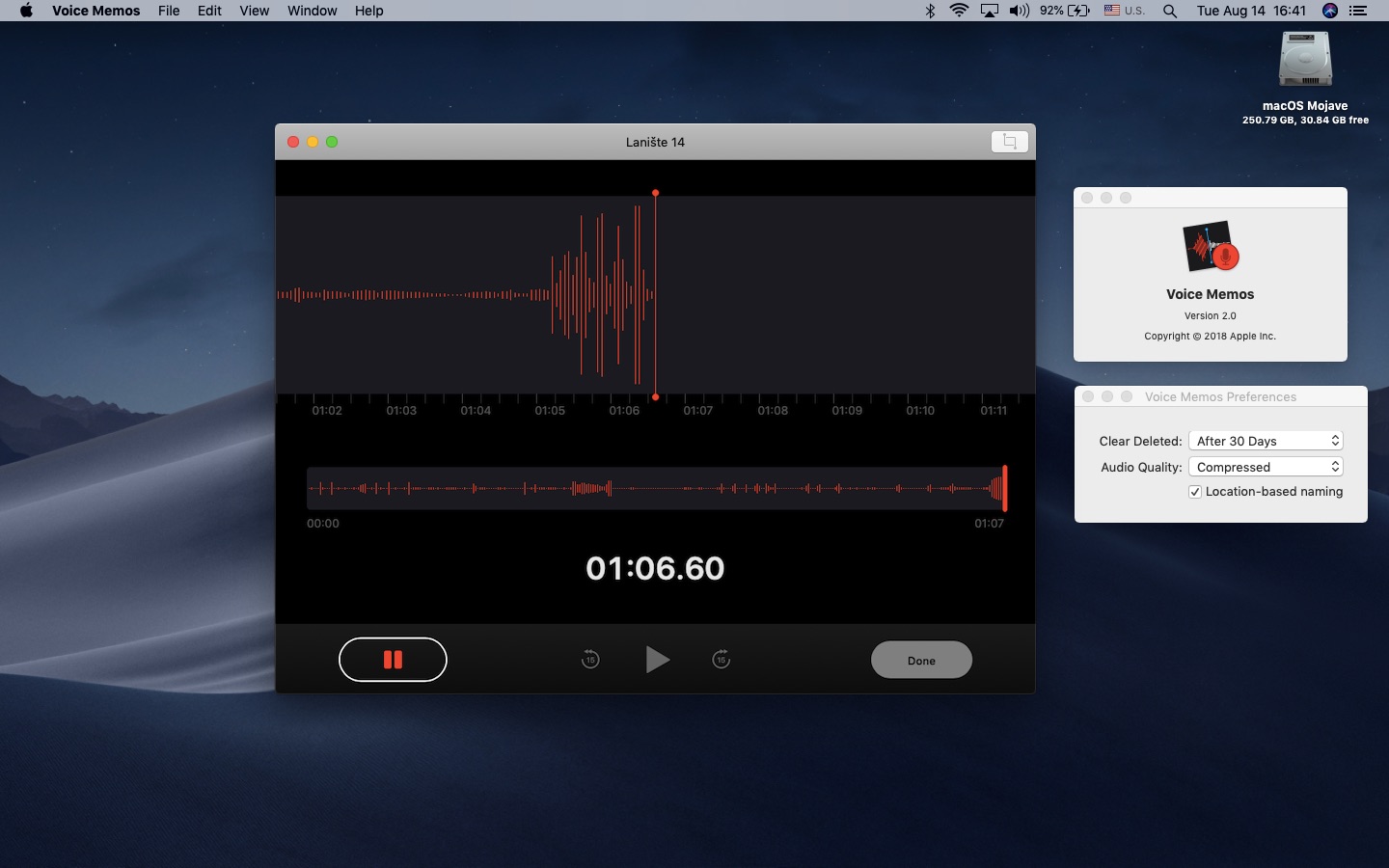
How To Download A Voice Memo On Mac
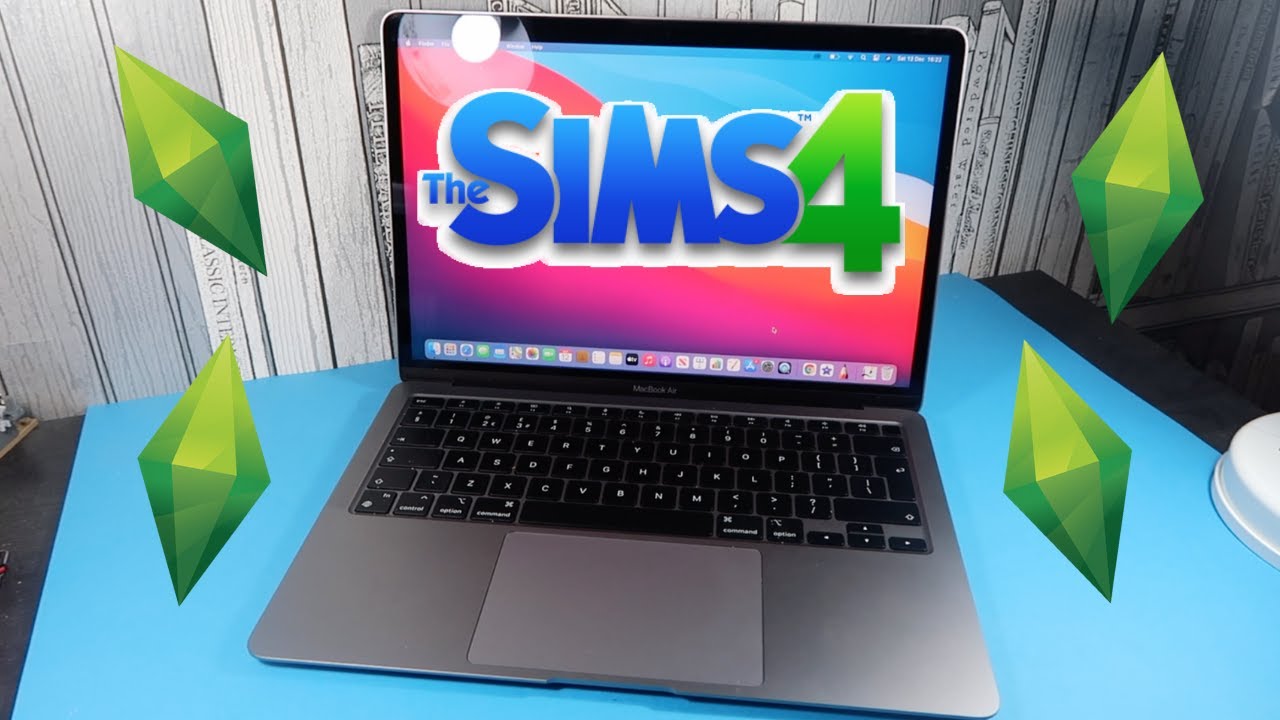
How To Download Sims 4 On Mac Free
Recent stories.

Fintechs and Traditional Banks: Navigating the Future of Financial Services

AI Writing: How It’s Changing the Way We Create Content

How to Know When it’s the Right Time to Buy Bitcoin

How to Sell Counter-Strike 2 Skins Instantly? A Comprehensive Guide

10 Proven Ways For Online Gamers To Avoid Cyber Attacks And Scams

- Privacy Overview
- Strictly Necessary Cookies
This website uses cookies so that we can provide you with the best user experience possible. Cookie information is stored in your browser and performs functions such as recognising you when you return to our website and helping our team to understand which sections of the website you find most interesting and useful.
Strictly Necessary Cookie should be enabled at all times so that we can save your preferences for cookie settings.
If you disable this cookie, we will not be able to save your preferences. This means that every time you visit this website you will need to enable or disable cookies again.

How to Find Your Downloads on Your Mac
While browsing the web, you may download items such as documents, music, images or ebooks. Sometimes you may download apps from the Internet. When you download an item, you may be confused about where it went. I was very confused about this when I first switched to Mac from Windows. In this article, I will explain where the items you download end up on your Mac. I will also cover how you can change and customize your download settings.
What is the Downloads folder?
Your Mac has a folder called Downloads. This folder houses downloaded items, and it is located in your user account. The path is /Users/[username]/Downloads/. By default, a shortcut to Downloads will also be in the Dock and in the Finder sidebar. If you do not see the folder in the Dock or Finder sidebar, you can bring it back .
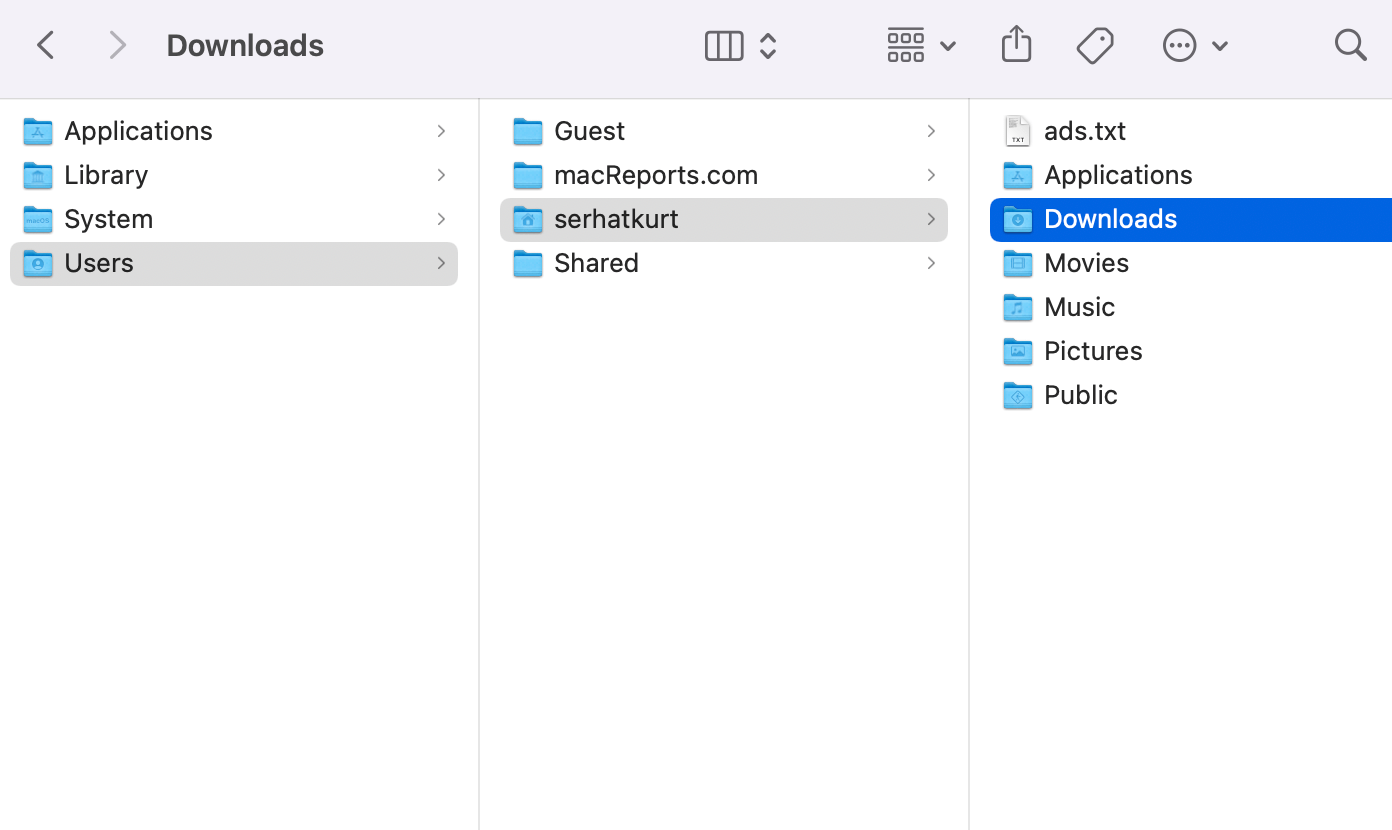
As I briefly explained above, the Downloads folder is the default location for your downloads. Below is a list of some of the items that are saved in this folder:
- Files or items downloaded from the Internet.
- Mail or Messages attachments.
- Files sent via AirDrop.

How to access the Downloads folder
There are a few ways to access the folder and locate your downloaded items:
- Dock: Your Dock lets you access the Downloads folder. Look next to the Trash icon. You will see a blue folder with a download symbol. Depending on your settings, it may also appear as a stack of items. This is why Downloads is also called a stack.

- Finder top menu: Open a Finder window, go to Go , then Downloads .
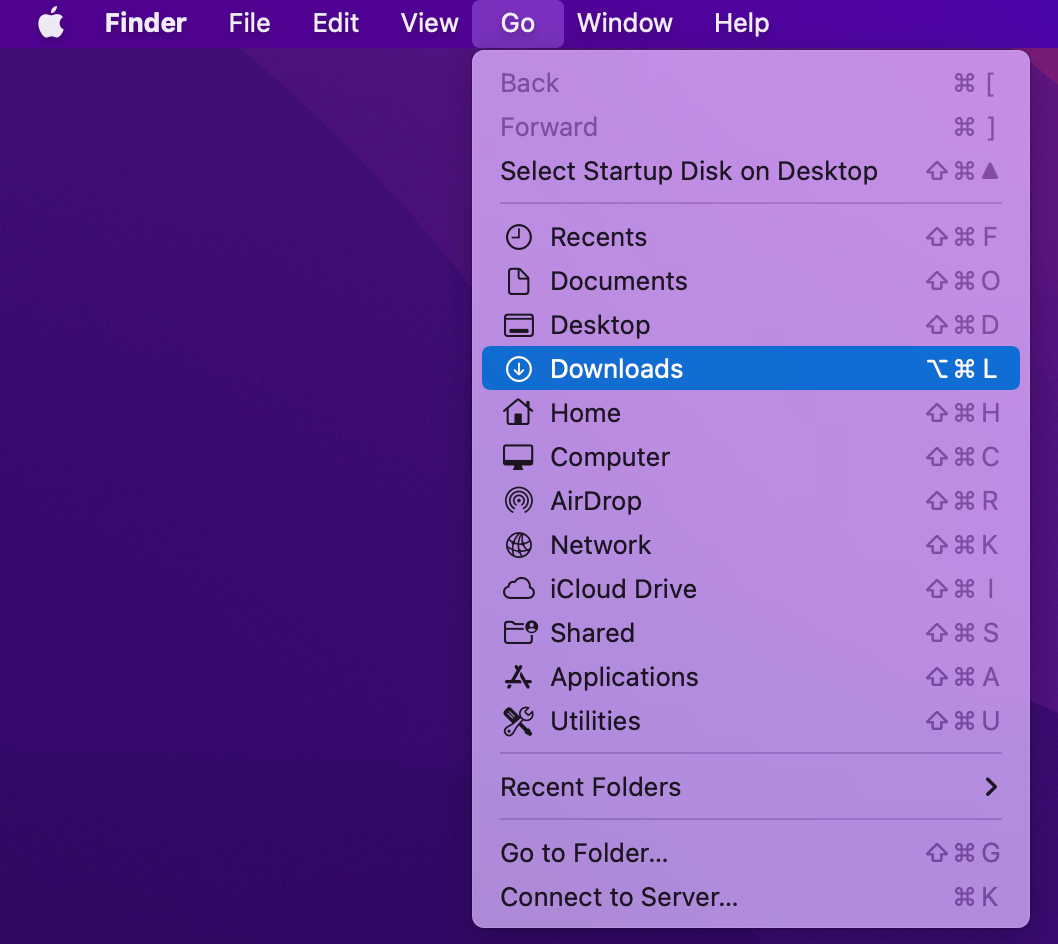
- Finder sidebar: Downloads will be available in the Finder sidebar.
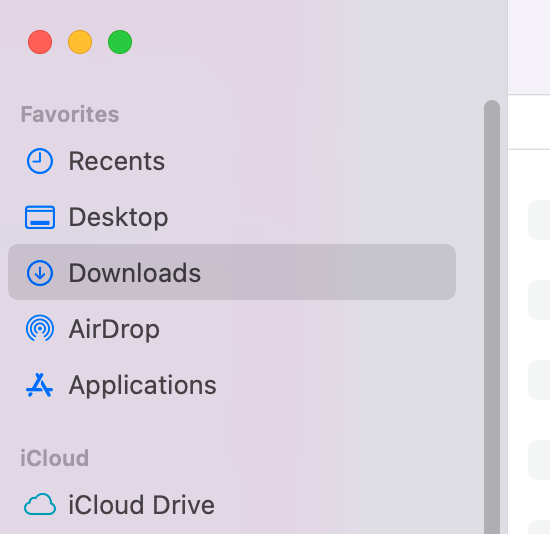
- Use a Shortcut: You can also use a shortcut to launch the folder. Using your keyboard, press these keys together: Option – Command – L .
How to change where your browser saves downloads
By default, your browser, such as Chrome or Safari, will save downloads to the Downloads folder, but you can change this. Here is how:
- Safari: With Safari open, from the top menu bar, go to Safari > Preferences > General . Locate the “File download location” option. If you want to save downloads to another folder, open the drop-down menu and select Other .
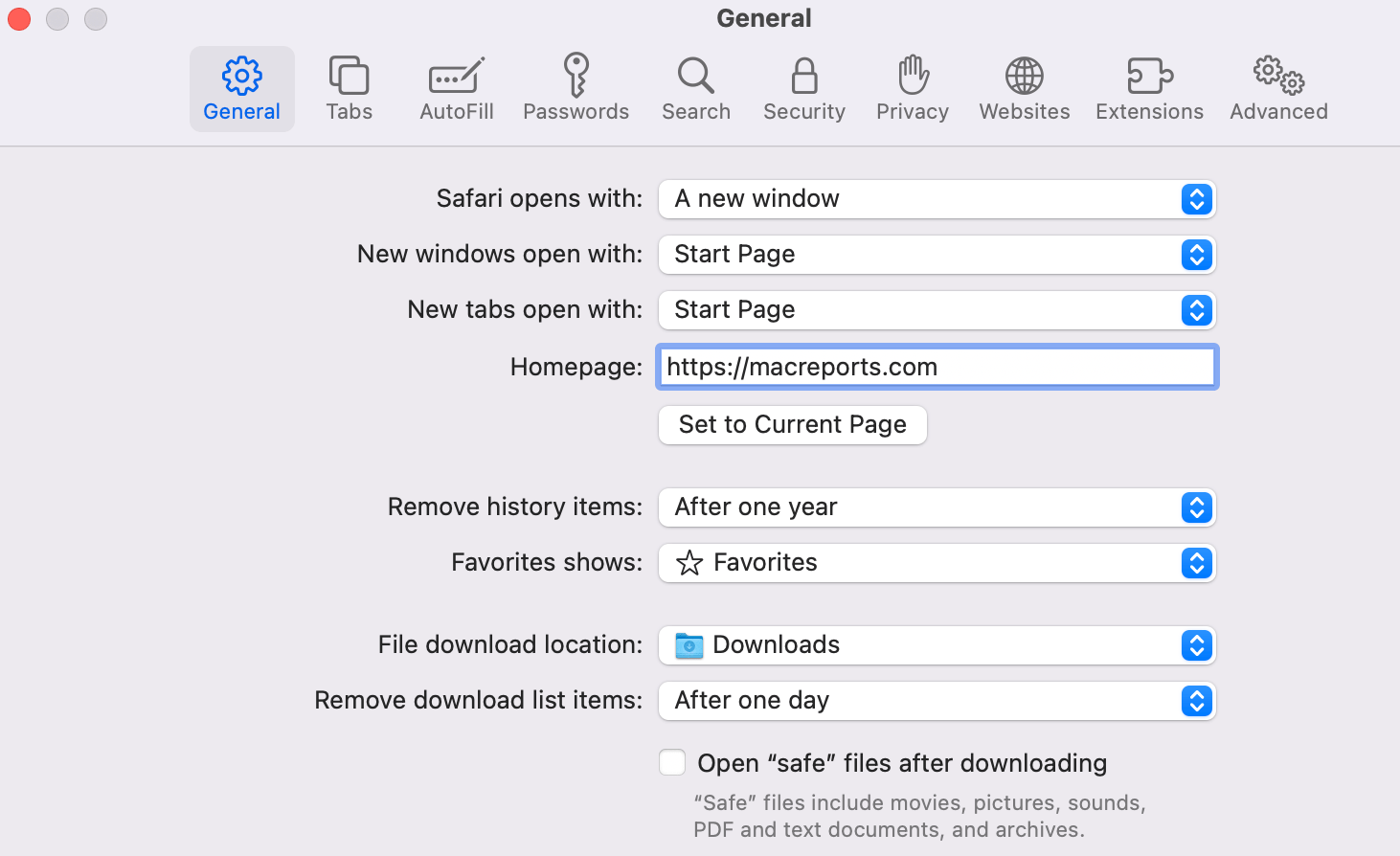
- Chrome: In Chrome, select Chrome > Preferences . From the sidebar, click Downloads , then click the Change button if you want to change the location.
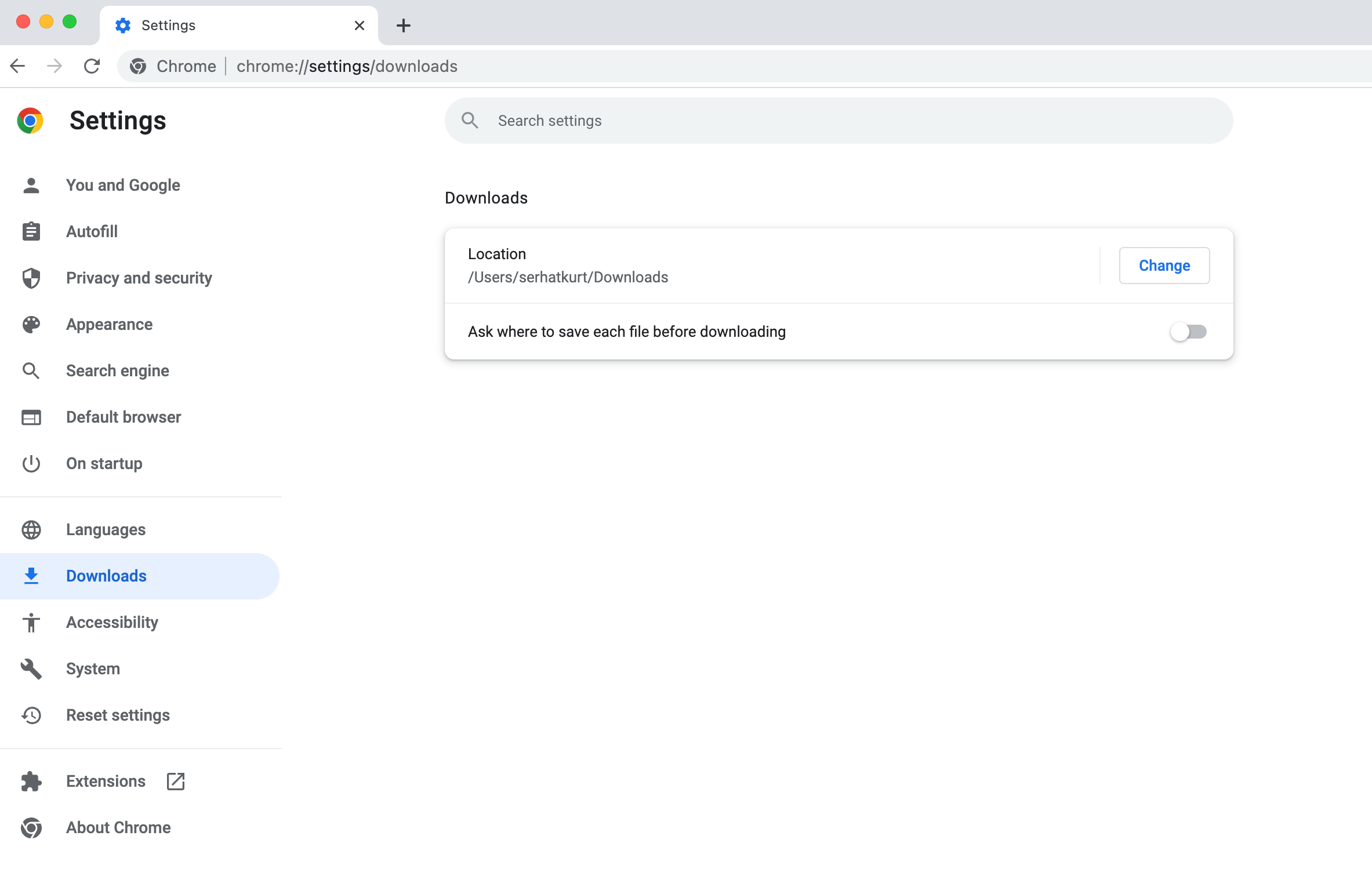
How to view your browser’s recently downloaded items
Safari has a download list. By default, the download list will be cleared after a day, but you can change this setting. If you want to do that, open Safari and click on Safari > Preferences and open the “Remove download list items” drop-down menu and select one of the options: after one day , when Safari quits , upon successful download or manually .
This list makes it easy for you to access your Safari downloads. It further helps you keep track of any currently downloading and already downloaded files. To view Safari downloads in Safari, click the Download button (if you do not see the button, your list is empty). The Download button is located near the top-right corner of the Safari window.
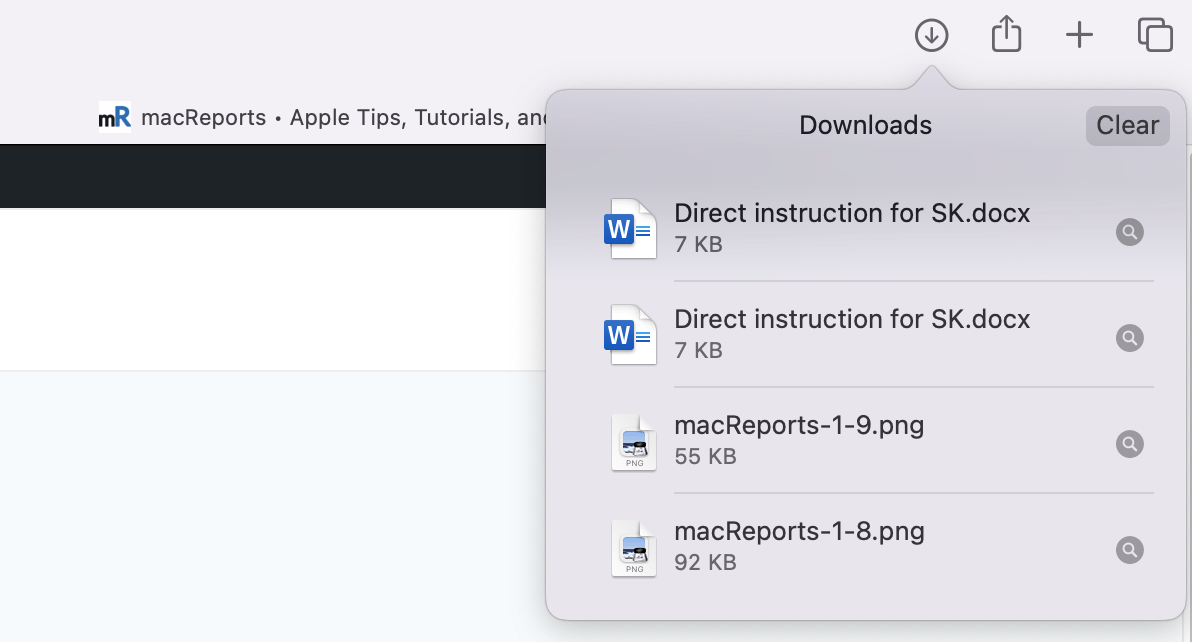
If you are using Chrome, Chrome has a similar list. To open the list of files you’ve downloaded, open Chrome, then click More and Downloads .
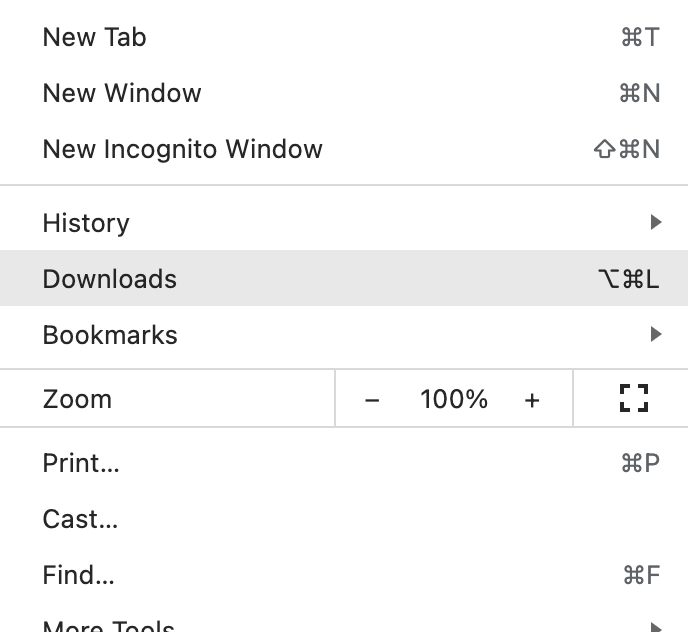
Related articles
- Where Do Downloads Go in Safari on iPhone or iPad?
- How To Download Zip Files Without Unzipping
- Cannot Download Photo: iCloud Library, Fix
Dr. Serhat Kurt worked as a Senior Technology Director specializing in Apple solutions for small and medium-sized educational institutions. He holds a doctoral degree (or doctorate) from the University of Illinois at Urbana / Champaign and a master’s degree from Purdue University. He is a former faculty member. Here is his LinkedIn profile and Google Scholar profile . Email Serhat Kurt .
Similar Posts
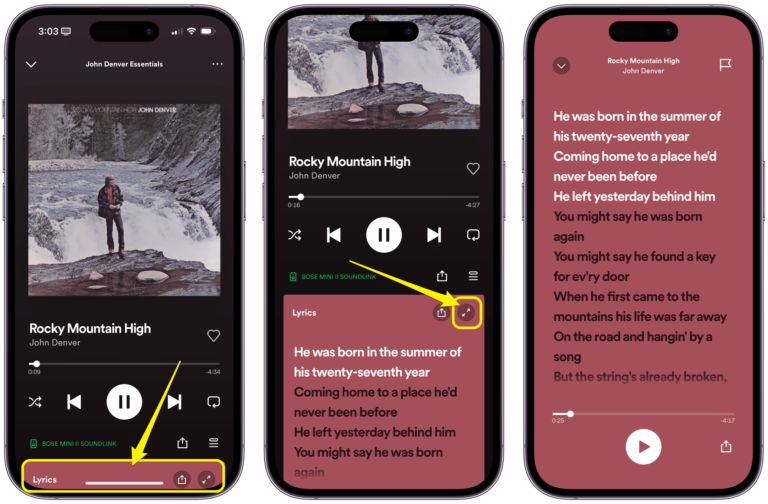
How to See Spotify Lyrics on iPhone, iPad and Mac
Having the lyrics available for songs you are listening to is a great feature. You may just be curious about the words to a song, or you might like to have all the…
How to Delete on Mac
There are various ways to delete stuff on your Mac. You can delete items, files, folders, or texts. This article explains all the ways you can delete. Delete files and folders Deleting files…
How to Clear the Clipboard on your Mac
Clipboard acts as a short-term buffer storage space that stores your copy and paste data. This data will stay there even after you cut, copy and paste it. When you cut or copy…

How to Withdraw Money from Apple Savings Account and Transfer to Your Bank
The first thing you may wonder about after opening an Apple Savings account is how to withdraw money from your Apple Savings account. You can withdraw some or all of your balance. Once…
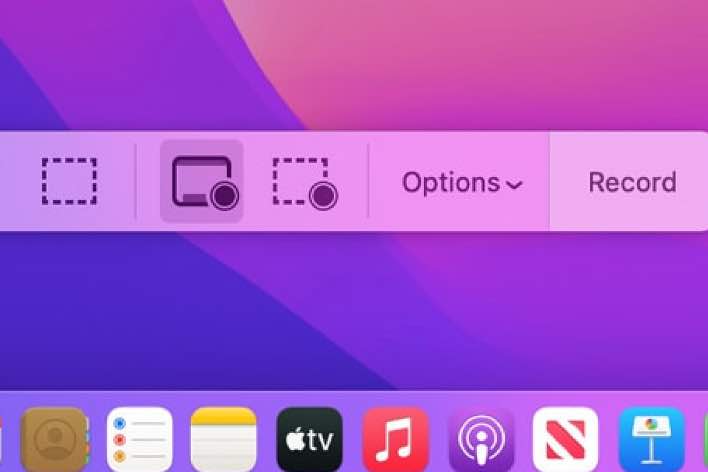
Ways to Stop Screen Recording on your Mac
There are two ways to record your screens without using a third-party tool on your Mac. The first one is to use the Screenshot utility tool, and the second one is to use…
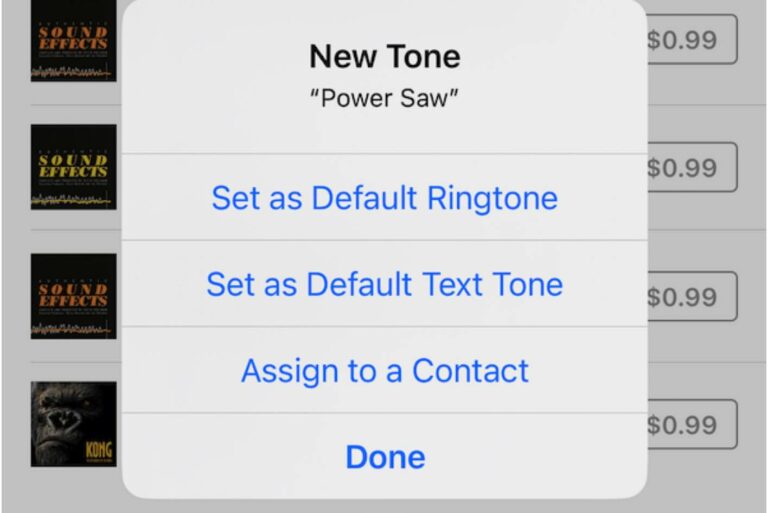
How to Buy Ringtones for Your iPhone
Ringtones are a great way to further personalize your phone. A ringtone is a short sound your iPhone makes when you receive a call. It acts as an alert. They usually range between…
Leave a Reply Cancel reply
Your email address will not be published. Required fields are marked *
Categories:
How-To Geek
How to find downloads on a mac.
Lost your downloads? We'll help you find them.
Quick Links
How to find your downloads folder on the dock, locate your downloads with finder, how to find downloads not in the downloads folder, key takeaways.
Click the Downloads folder on your Mac's dock to view your downloaded files. If the Downloads folder isn't on the dock, open Finder and navigate to Users > (Username) > Downloads to find your downloads.
If you've downloaded a file through a browser like Safari or Chrome on your Mac, you might be confused about where the file ended up. Luckily, there's a typical place to look first, and we'll help you find it.
On a Mac, downloaded files are usually saved by default in a special folder called "Downloads" that is located within your user account folder. By default, macOS ships with a link to your personal Downloads folder in the dock , which is the row of app icons on the bottom or side of your screen. Look in the dock (beside the Trash) for a stack of icons or a folder icon with a downward-pointing arrow on it.
Click that shortcut, and your Downloads folder will open.
If you don't have a shortcut to Downloads in the dock, you can drag the Downloads folder from Finder to the area beside Trash to place it there. You can also change its appearance between a "Stack" and a blue folder icon by right-clicking the Downloads shortcut and using the "Display As" option.
You can also find the Downloads folder in Finder , which is an application that helps you manage files. To open Finder, click the Finder icon in your dock, which looks like a smiley face.
In the Finder Window that opens, you have several options for reaching the Downloads folder.
- The Menu Bar: With Finder in the foreground, click Go > Downloads in the menu bar at the top of the screen.
- The Finder Sidebar: In any Finder window, look in the sidebar on the left side of the window and click "Downloads" in the list of "Favorites." If "Downloads" isn't listed in Favorites, you can drag the icon for the Downloads folder into the sidebar later. Or press Command+Comma (","), click "Sidebar" and place a check mark beside "Downloads" in the list.
- By Browsing: If you want to find the Downloads folder by browsing a file path, start at your Macintosh HD root folder, then navigate to Users > [Username] > Downloads.
Once you open the Downloads folder, you'll see a group of files that you've downloaded in the past. Look through it to find the file you're missing.
If the file you're looking for isn't located in the Downloads folder and you know the file's name, you can do a Spotlight search to find it. To do so, press Command+Space on your keyboard, then type the name of the file (or part of the name) you're looking for.
If you see the file in the list of results, you're set. To show the file's location in Finder, highlight the file in the Spotlight results list and press Command+Return.
If that doesn't help, you can also use saved download history in your browser to locate the missing file. In Safari, you can see your download history by pressing Option+Command+L or clicking the downward arrow in a circle beside the address bar. In the menu that appears, click the magnifying glass icon beside a file to open its location in Finder.
If you don't have any downloads that icon will not appear, and the Option+Command+L hotkey won't do anything.
In Chrome, you can also see a downloads list if it hasn't been cleared. To do so, open Chrome and click the three dots button in the upper-right corner of any window. In the menu that appears, select "Downloads." In the Downloads tab that opens, locate the file in the list and click the "Show in Finder" link below it.
A Finder window will open pointing to the location of your downloaded file. Repeat with any other files you need to locate. Good luck, and happy downloading!
How to Find Downloads on iPhone 14: A Step-by-Step Guide
Trying to find downloads on your iPhone 14 can be like looking for a needle in a haystack if you don’t know where to look. But don’t worry, it’s pretty simple once you get the hang of it. You just need to know where to tap and what to look for. In just a few quick steps, you’ll be able to locate all your downloaded files, whether it’s that PDF you need for work or the latest episode of your favorite podcast.
How to Find Downloads on iPhone 14 Tutorial
So, you’ve downloaded a file on your iPhone 14, and now you can’t find it? No problem. The following steps will guide you through the process of locating your downloads in no time.
Step 1: Open the Files app
Start by opening the Files app on your iPhone 14.
The Files app is the go-to place for managing all your documents and downloads on your iPhone. If you haven’t done so already, you might need to download it from the App Store.
Step 2: Tap on “Browse” at the bottom of the screen
Once the Files app is open, tap on “Browse” at the bottom of the screen to view your folders and files.
This will take you to a screen where you can see all the different locations and folders where your files might be stored.
Step 3: Check the “Downloads” folder
Look for the “Downloads” folder and tap on it to see your downloaded files.
The Downloads folder is typically where any files you download from the Safari browser or your email get stored by default.
Step 4: Search for a specific file using the search bar
If you’re looking for a specific file, use the search bar at the top of the screen to type in the file’s name.
The search function is handy for quickly finding a file without having to scroll through everything in your Downloads folder.
Step 5: Open or move the file as needed
Once you find the file, you can open it directly from the Files app or move it to a different folder if needed.
You can also share the file with others, make a copy, or delete it if you no longer need it.
After completing these steps, you’ll have successfully located your downloads on your iPhone 14. You can now open and manage your files as needed.
Tips for Managing Downloads on iPhone 14
- Keep your files organized by creating folders within the Files app for different types of downloads.
- Regularly clean out your Downloads folder to free up space on your iPhone.
- If you download a file and can’t find it, check the app you downloaded it from. Some apps have their own in-app downloads folder.
- Use the “On My iPhone” location in the Files app to store files directly on your device if you don’t want to use iCloud.
- You can drag and drop files across different locations and folders within the Files app for easy organizing.
Frequently Asked Questions
What if i can’t find the files app on my iphone 14.
If you can’t find the Files app, it might not be installed. Go to the App Store and download it for free.
Can I download files from the internet directly to my iPhone 14?
Yes, you can download files from the internet using Safari and they will typically be saved to your Downloads folder.
How can I save a downloaded file to my iCloud Drive?
In the Files app, simply move the file from the Downloads folder to the iCloud Drive location.
Is there a limit to the size of the file I can download on my iPhone 14?
There isn’t a specific limit, but keep in mind that larger files will take up more storage space on your device.
Can I change the default download location on my iPhone 14?
Yes, you can change the default download location by going to Settings > Safari > Downloads, and then select where you’d like files to be saved.
- Open the Files app
- Tap on “Browse”
- Check the “Downloads” folder
- Search for a specific file
- Open or move the file
Finding downloads on your iPhone 14 doesn’t have to be a daunting task. With the Files app and a few taps, you’ll have all your downloaded content at your fingertips. Whether it’s for work, school, or play, managing your files effectively is key to staying organized and making the most out of your device’s capabilities. Remember to regularly organize and delete unnecessary files to keep your iPhone running smoothly. And there you have it, now you’re a pro at finding downloads on an iPhone 14. Happy downloading!

Matthew Burleigh has been writing tech tutorials since 2008. His writing has appeared on dozens of different websites and been read over 50 million times.
After receiving his Bachelor’s and Master’s degrees in Computer Science he spent several years working in IT management for small businesses. However, he now works full time writing content online and creating websites.
His main writing topics include iPhones, Microsoft Office, Google Apps, Android, and Photoshop, but he has also written about many other tech topics as well.
Read his full bio here.
Share this:
Join our free newsletter.
Featured guides and deals
You may opt out at any time. Read our Privacy Policy
Related posts:
- How to Open the Downloads Folder in Windows 10
- How to Find My Downloads History in Google Chrome
- How to Select Multiple Files in Google Drive
- How to Create a Folder in Google Docs
- How to Download an Entire Folder in Google Drive
- How to Create a Folder on iPhone [2023 Guide]
- Merge CSV Files Into One Large CSV File In Windows 7
- How to Download a Google Sheet as an Excel File
- How to Remove Downloaded Music from iPhone 13
- How to Move the Chrome Download Folder
- How to Change the Download Over Cellular iPhone Setting
- How to Make All Columns the Same Width in Excel 2013
- 15 iPhone Settings You Might Want to Change
- How to Open Zip Files on the iPhone: A Step-by-Step Guide
- How to Delete Downloads from YouTube on an iPhone 11
- How to Configure Automatic Downloads iPhone Settings
- How to Delete Spotify Downloads on an iPhone
- How to Share Documents on Google Docs, Sheets, or Slides from Google Drive
- How to Delete Podcasts from iPhone 13
- How to Find the AppData Folder in Windows 7

Different Ways to Find Downloaded Files on Your iPhone or iPad
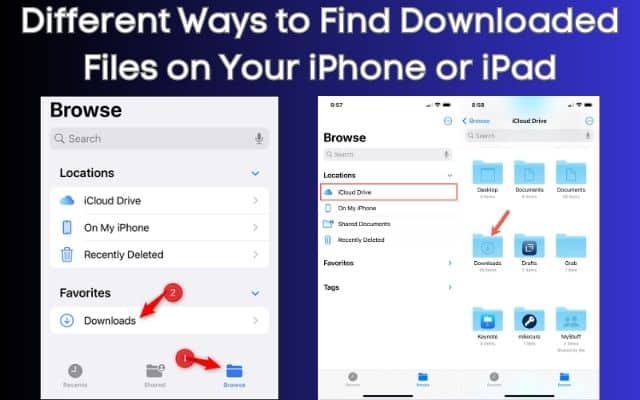
Table of Contents
You can find Downloaded files that you download from the web on your iPhone or iPad under the Downloads folder within the Files app.
Finding downloaded files on an iPhone can sometimes be a bit confusing, especially if you’re accustomed to other devices like Macs. We will cover the steps to locate various types of downloaded content on your iPhone: photos, music, and apps.
Having trouble finding downloads on your iPhone? It’s not just you. Accessing downloaded files on an iPhone can be challenging in comparison to a computer.
How to Find Downloaded Files on iPhone/ipad
You can access and manage downloaded files through various apps and locations on your iPhone or iPad. Here’s how:
Method 1: To find Downdoaded Files through Files App:
- On your iPhone or iPad, locate and open the “Files” app. It is a pre-installed app on iOS devices.
- By default, the “Browse” tab should be selected at the bottom of the screen. If not, tap on “Browse” at the bottom.
- Under the “Locations” section, tap on “On My iPhone” or “On My iPad.”
- If you have downloaded files using certain apps like Safari, Mail, or third-party file managers, you may find those files in their respective folders within the “On My iPhone” or “On My iPad” section.
Method 2: To find Downdoaded Files through Safari Downloads:
When you download files using the Safari web browser on your iPhone or iPad, they are not directly accessible through a dedicated folder.
To access downloaded files in Safari, tap on the “Downloads” icon in the Safari toolbar (the arrow pointing down).
A list of downloaded files will appear. From here, you can tap on a file to open, view, or share it with other apps.
Method 3: To find Downdoaded Files through Third-Party Apps:
Many apps, such as cloud storage services, document editors, or file manager apps, provide their own file management systems and downloads folders.
If you use apps like Google Drive, Dropbox, Microsoft OneDrive, or Adobe Acrobat, check within their respective apps to find the downloaded files.
Look for options like “Downloads,” “Files,” or specific folders related to those apps to locate your downloaded files.
How to Find Downloaded Photos, Music and Apps on iPhone/ipad
How to find downloaded photos on iphone.
- Open the Photos app on your iPhone.
- At the bottom of the screen, tap on the “Albums” tab.
- Scroll down until you find an album titled “Downloads” or “Recently Added.”
- Tap on the album, and you should see all the photos you have downloaded on your iPhone.
How to Find Downloaded Music on iPhone
- Open the Apple Music app on your iPhone.
- Press on the “Library” tab at the bottom of the screen.
- Scroll down to locate the section labeled “Downloaded Music.”
- Here, you will find all the songs and albums that you have downloaded for offline listening.
How to Find Downloaded Apps on iPhone
- From your iPhone’s home screen, swipe right to access the App Library. Alternatively, you can swipe down on the home screen to reveal the search bar.
- In the search bar, type the name of the downloaded app you wish to find.
- As you type, the search results will start to appear.
- Tap on the app icon from the search results to open the downloaded app.
Q1: Where can I find downloaded files on my iPhone/iPad?
A: You can find downloaded files on your iPhone or iPad within the Files app. Open the Files app, tap on “Browse,” and select “On My iPhone” or “On My iPad.” Downloaded files from apps like Safari or Mail may also be found within their respective folders.
Q2: How do I find downloaded files through the Safari browser?
A: When you download files using Safari on your iPhone or iPad, they aren’t stored in a dedicated folder. Tap the “Downloads” icon in the Safari toolbar (down arrow) to access the list of downloaded files. From there, you can open, view, or share the downloaded files.
Q3: What about downloaded files in third-party apps?
A: Many apps, such as cloud storage services or file managers, have their own file management systems and downloads folders. If you use apps like Google Drive, Dropbox, or Microsoft OneDrive, check within those apps for specific folders like “Downloads” or “Files” to locate your downloaded files.
Q4: How can I find downloaded photos on my iPhone?
A: Open the Photos app, tap on the “Albums” tab, and scroll down to find the “Downloads” or “Recently Added” album. Tap on the album to access all the photos you have downloaded on your iPhone.
Q5: Where do I find downloaded music on my iPhone?
A: Launch the Apple Music app and tap on the “Library” tab. Scroll down to the “Downloaded Music” section, where you’ll find all the songs and albums you have downloaded for offline listening.
Q6: How do I find downloaded apps on my iPhone?
A: Swipe right on your iPhone’s home screen to access the App Library, or swipe down to reveal the search bar. Type the name of the downloaded app you want to find in the search bar, and tap on the app icon from the search results to open the downloaded app.
- How to Download Videos on iPhone from Safari in All Possible Ways
- How to Fix instagram app keeps crashing on Android or iphone
- How to lock your facebook profile on Android, iphone and Desktop
- How to forward calls and use call waiting on your iPhone
- How to delete youtube playlist on android, iPhone and PC
Conclusion:
Finding downloaded files on an iPhone may not be as simple as on other devices, but with a little guidance, you can easily find your downloaded photos, music, and apps. You’ll be able to access and manage your downloaded files on your iPhone with ease. Enjoy exploring and organizing your downloaded content effortlessly.
How to access device manager in windows 10
How to set up fortnite xcloud to play on ios and android devices, related articles.

How to schedule emails on iOS 16 with the updated Mail app

How to refund a game on steam in Easy Steps

Fix No Command Error on Your Android Device

How to unban Telegram Number in 2024
Adblock Detected
Find iPhone Downloads: Ultimate Guide

Did you just download something and can’t seem to figure out where it’s saved? Well, that’s pretty much with every new iPhone user. Downloading files on iPhones is not very straightforward. You need to make some configurations to have your downloads in place.
But worry not; this comprehensive guide will show you how to do exactly that. Whether you want to download an item from Safari, a mail attachment, or some other app, we’ve got you covered. Let’s explore how to find iPhone downloads.
Locate Safari Downloads
When you download something from Safari, it doesn’t automatically get saved into the Files app. All you see is a small Download icon on the address bar which will help you find the downloaded item.
Note: The download icon doesn’t appear all the time but only after you download something.
- Open Safari.

- You will be able to see your downloads here. Tap on the “search” icon next to the filename to open it in the Files app.
Save Safari Downloads in the Photos app or Files App
Downloading a file or something else doesn’t always show up in the Downloads folder in the Files app. So, if you want to save your Safari downloads, such as a video or a photo, in the Photos or the Files app, follow the steps below.
- Tap on the Download icon at the bottom.
- Then, tap on the photo or video you want to save to the Photos app . A preview of the photo or video will open.
- If you want to save your downloads to the Files app, tap on Save to Files.

Find Downloads Folder in the Files App
Finding your downloads in the Files app is easy. There is a dedicated Downloads folder. To find all your downloads, follow the steps below.

- Navigate to the Browse tab at the bottom.
- Tap on iCloud Drive or On My iPhone.

Note: The Downloads folder will not appear if you have no downloads.
You can mark the Downloads folder as a favorite for easy access. Follow the steps below.
- Tap on Favourite (it looks like a star).
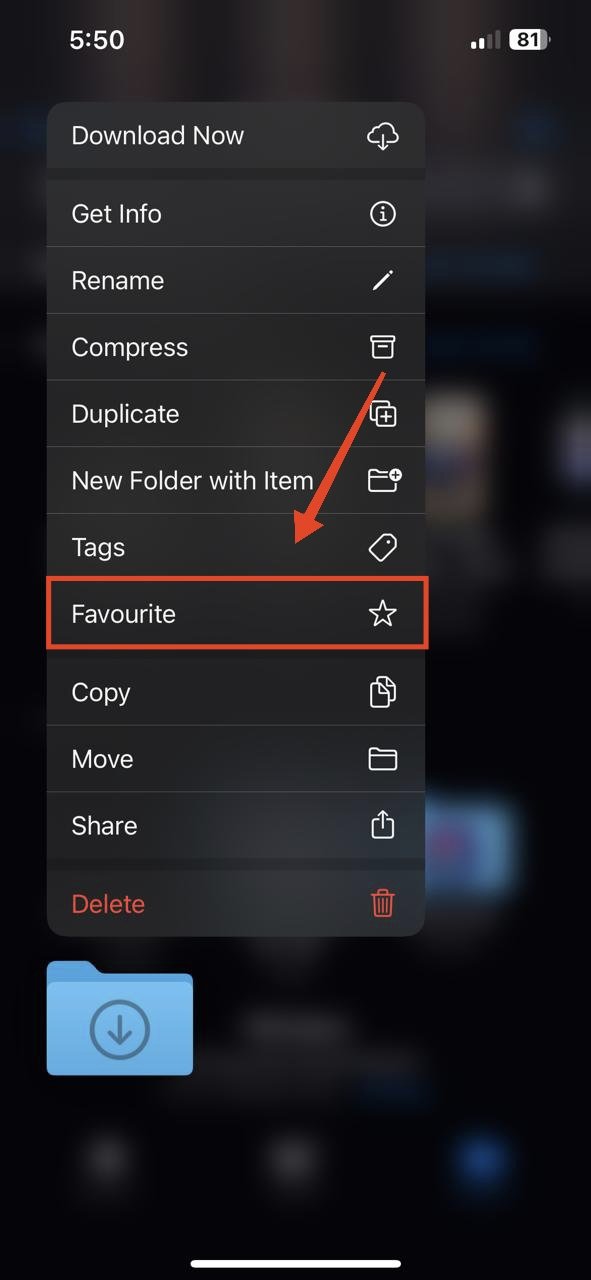
Download Mail Attachments
When you download mail attachments such as PDFs, videos, photos, etc., they will also appear in the Downloads folder. Here’s how.
- Open your preferred Mail app.
- Tap on the attachment you want to download.

- Now, open the Files app and go to the Downloads folder. You will find your downloaded attachment here.
Frequently Asked Questions (F.A.Q)
Why can’t i see the downloads folder in my files app.
Downloads don’t automatically show up in the Files app. So, if you don’t explicitly tap on Save to Files and you have no downloads saved, the Downloads folder will not show up. You need to have at least one downloaded file saved for the folder to show up.
How can I find my Safari downloads if the Download icon doesn’t appear?
If the Download icon doesn’t appear, download the file again and tap on it immediately. Then, tap on Downloads and you will see your downloads.
Can I save Safari downloads directly to the Photos app or Files app?
Yes, you can but only manually. After downloading a file or something else in Safari, tap on the Download icon at the bottom, then tap Downloads. From there, you can tap on the photo or video you want to save and select “Save Video” to save it to the Photos app, or “Save to Files” to save it to the Files app.
Can I change the location where Safari downloads are saved?
No, you cannot change the default location where Safari downloads are saved. When you save a download to Files, it will only and only appear in the Downloads folder.
How do I access my downloads if I’ve accidentally deleted them from the Downloads folder?
If you’ve accidentally deleted your downloads from the Downloads folder, you may be able to recover them from the Recently Deleted folder in the Files app. Open the Files app, tap on Browse, then tap on Recently Deleted.
Final Words
That’s it for this guide. We hope that it has helped you find the downloads on your iPhone. We also answered your frequently asked questions, so that you have everything cleared up. Remember to save your downloads to the Files app for easy access. Cheers!
If you've any thoughts on Find iPhone Downloads: Ultimate Guide , then feel free to drop in below comment box . Also, please subscribe to our DigitBin YouTube channel for videos tutorials. Cheers!
Tags: Download iPhone
- Next post How to Fix Windows Modules Installer Worker High CPU Usage
- Previous post How to Record Calls on Nothing Phone
You may also like

Leave a Reply Cancel reply
Your email address will not be published. Required fields are marked *

Recent Posts

Phasmophobia Console Release Date: 2024 Roadmap

What is CroxyProxy YouTube
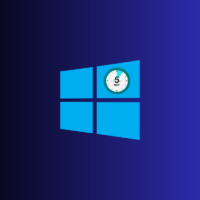
How to Display Seconds in Taskbar Clock on Windows 11

10 Best Video Downloaders for PC: Windows and Mac
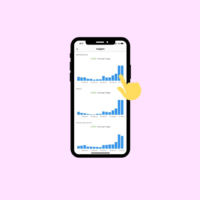
How to Fix Instagram Reels Insights Not Showing
You may Also Like
Fix – “No Subject, No Sender” Ghost E-Mail Messages on iOS
7 Best Movie Apps for Windows 11
How to Fix Windows 11 Lagging After Software Update?
How to Fix DS4Windows Not Detecting Controller on Windows 11?
How to Re-arrange iMessage Apps on Your iPhone with iOS 17?
About iOS 17 Updates
iOS 17 brings big updates to Phone, Messages, and FaceTime that give you new ways to express yourself as you communicate. StandBy delivers a new full-screen experience with glanceable information designed to view from a distance when you turn iPhone on its side while charging. AirDrop makes it easier to share and connect with those around you and adds NameDrop for contact sharing. Enhancements to the keyboard make entering text faster and easier than ever before. iOS 17 also includes updates to Widgets, Safari, Music, AirPlay, and more.
For information on the security content of Apple software updates, please visit this website: https://support.apple.com/kb/HT201222
This update provides important bug fixes and security updates and is recommended for all users.
For information on the security content of Apple software updates, please visit this website:
https://support.apple.com/kb/HT201222
This update introduces new emoji, transcripts in Apple Podcasts and includes other features, bug fixes, and security updates for your iPhone.
New mushroom, phoenix, lime, broken chain, and shaking heads emoji are now available in the emoji keyboard
18 people and body emoji add the option to face them in either direction
Apple Podcasts
Transcripts let you follow an episode with text that highlights in sync with the audio in English, Spanish, French and German
Episode text can be read in full, searched for a word or phrase, tapped to play from a specific point and used with accessibility features such as Text Size, Increase Contrast, and VoiceOver
This update includes the following enhancements and bug fixes:
Music recognition lets you add songs you have identified to your Apple Music Playlists and Library, as well as Apple Music Classical
Siri has a new option to announce messages you receive in any supported language
Stolen Device Protection supports the option for increased security in all locations
Battery Health in Settings shows battery cycle count, manufacture date, and first use on iPhone 15 and iPhone 15 Pro models
Call Identification displays Apple-verified business name, logo, and department name when available
Business updates in Messages for Business provide trusted information for order status, flight notifications, fraud alerts or other transactions you opt into
Apple Cash virtual card numbers enable you to pay with Apple Cash at merchants that don’t yet accept Apple Pay by typing in your number from Wallet or using Safari AutoFill
Fixes an issue where contact pictures are blank in Find My
Fixes an issue for Dual SIM users where the phone number changes from primary to secondary and is visible to a group they have messaged
Some features may not be available for all regions or on all Apple devices. For information on the security content of Apple software updates, please visit this website:
This update provides bug fixes for your iPhone including:
Text may unexpectedly duplicate or overlap while typing
This update introduces additional security measures with Stolen Device Protection. This release also includes a new Unity wallpaper to honor Black history and culture in celebration of Black History Month, as well as other features, bug fixes, and security updates for your iPhone.
Stolen Device Protection
Stolen Device Protection increases security of iPhone and Apple ID by requiring Face ID or Touch ID with no passcode fallback to perform certain actions
Security Delay requires Face ID or Touch ID, an hour wait, and then an additional successful biometric authentication before sensitive operations like changing device passcode or Apple ID password can be performed
Lock Screen
New Unity wallpaper honors Black history and culture in celebration of Black History Month
Collaborate on playlists allows you to invite friends to join your playlist and everyone can add, reorder, and remove songs
Emoji reactions can be added to any track in a collaborative playlist
This update also includes the following improvements:
AirPlay hotel support lets you stream content directly to the TV in your room in select hotels
AppleCare & Warranty in Settings shows your coverage for all devices signed in with your Apple ID
Crash detection optimizations (all iPhone 14 and iPhone 15 models)
This update provides important bug fixes and is recommended for all users.
This update introduces Journal, an all-new way to reflect on life’s moments and preserve your memories. This release also includes Action button and Camera enhancements, as well as other features, bug fixes, and security updates for your iPhone.
Journal is a new app that lets you write about the small moments and big events in your life so you can practice gratitude and improve your wellbeing
Journaling suggestions make it easy to remember your experiences by intelligently grouping your outings, photos, workouts, and more into moments you can add to your journal
Filters let you quickly find bookmarked entries or show entries with attachments so you can revisit and reflect on key moments in your life
Scheduled notifications help you keep a consistent journaling practice by reminding you to write on the days and time you choose
Option to lock your journal using Touch ID or Face ID
iCloud sync keeps your journal entries safe and encrypted on iCloud
Action Button
Translate option for the Action button on iPhone 15 Pro and iPhone 15 Pro Max to quickly translate phrases or have a conversation with someone in another language
Spatial video lets you capture video on iPhone 15 Pro and iPhone 15 Pro Max so you can relive your memories in three dimensions on Apple Vision Pro
Improved Telephoto camera focusing speed when capturing small faraway objects on iPhone 15 Pro and iPhone 15 Pro Max
Catch-up arrow lets you easily jump to your first unread message in a conversation by tapping the arrow visible in the top-right corner
Add sticker option in the context menu lets you add a sticker directly to a bubble
Memoji updates include the ability to adjust the body shape of any Memoji
Contact Key Verification provides automatic alerts and Contact Verification Codes to help verify people facing extraordinary digital threats are messaging only with the people they intend
Precipitation amounts help you stay on top of rain and snow conditions for a given day over the next 10 days
New widgets let you choose from next-hour precipitation, daily forecast, sunrise and sunset times, and current conditions such as Air Quality, Feels Like, and wind speed
Wind map snapshot helps you quickly assess wind patterns and access the animated wind map overlay to prepare for forecasted wind conditions for the next 24 hours
Interactive moon calendar lets you easily visualize the phase of the moon on any day for the next month
This update also includes the following improvements and bug fixes:
Siri support for privately accessing and logging Health app data using your voice
AirDrop improvements including expanded contact sharing options and the ability to share boarding passes, movie tickets, and other eligible passes by bringing two iPhones together
Favorite Songs Playlist in Apple Music lets you quickly get back to the songs you mark as favorites
Use Listening History in Apple Music can be disabled in a Focus so music you listen to does not appear in Recently Played or influence your recommendations
A new Digital Clock Widget lets you quickly catch a glimpse of the time on your Home Screen and while in StandBy
Enhanced AutoFill identifies fields in PDFs and other forms enabling you to populate them with information such as names and addresses from your contacts
New keyboard layouts provide support for 8 Sámi languages
Sensitive Content Warning for stickers in Messages prevents you from being unexpectedly shown a sticker containing nudity
Qi2 charger support for all iPhone 13 models and iPhone 14 models
Fixes an issue that may prevent wireless charging in certain vehicles
This update provides important security fixes and is recommended for all users.
In rare circumstances, Apple Pay and other NFC features may become unavailable on iPhone 15 models after wireless charging in certain cars
Weather Lock Screen widget may not correctly display snow
This update introduces the ability for AirDrop transfers to continue over the internet when you step out of AirDrop range. This release also includes enhancements to StandBy and Apple Music, as well as other features, bug fixes, and security updates for your iPhone.
Content continues to transfer over the internet when you step out of AirDrop range
New options to control when the display turns off (iPhone 14 Pro, iPhone 14 Pro Max, iPhone 15 Pro, and iPhone 15 Pro Max)
Favorites expanded to include songs, albums, and playlists, and you can filter to display your favorites in the library
New cover art collection offers designs that change colors to reflect the music in your playlist
Song suggestions appear at the bottom of every playlist, making it easy to add music that matches the vibe of your playlist
Option to choose a specific album to use with Photo Shuffle on the Lock Screen
Home key support for Matter locks
Improved reliability of Screen Time settings syncing across devices
Fixes an issue that may cause the Significant Location privacy setting to reset when transferring an Apple Watch or pairing it for the first time
Resolves an issue where the names of incoming callers may not appear when you are on another call
Addresses an issue where custom and purchased ringtones may not appear as options for your text tone
Fixes an issue that may cause the keyboard to be less responsive
Fixes an issue that may cause display image persistence
https://support.apple.com/HT201222
This update provides important bug fixes, security updates, and addresses an issue that may cause iPhone to run warmer than expected.
This update provides important bug fixes, security updates, and fixes an issue that may prevent transferring data directly from another iPhone during setup.
Contact Posters let you customize how you appear on other people’s devices when you call them with a customized poster
Live Voicemail displays a live transcription as someone leaves a message and allows you to pick up the call
Stickers iMessage app brings all your stickers into one place including Live Stickers, Memoji, Animoji, emoji stickers, and your third party sticker packs
Live Stickers can be created by lifting the subject from photos or videos and stylizing them with effects like Shiny, Puffy, Comic, and Outline
Check In automatically notifies a family member or friend when you arrive at a destination safely and can share helpful information with them in case of a delay
Audio message transcription is available for audio messages you receive so you can read them in the moment and listen later
Search improvements help you find messages faster by allowing you to combine search filters such as people, keywords, and content types like photos or links to find exactly what you are looking for
Swipe to reply to a message inline by swiping to the right on any bubble
One-time verification code cleanup automatically deletes verification codes from the Messages app after using them with AutoFill in other apps
Leave a video or audio message to capture exactly what you want to say when someone does not pick up your FaceTime call
Enjoy FaceTime calls on Apple TV by using your iPhone as a camera (Apple TV 4K 2nd generation and later)
Reactions layer 3D effects like hearts, balloons, confetti, and more around you in video calls and can be triggered with gestures
Video effects allow you to adjust the intensity of Studio Lighting and Portrait mode
Full-screen experience with glanceable information like clocks, photos, and widgets designed to view from a distance when iPhone is on its side and charging in places such as your nightstand, kitchen counter, or desk
Clocks are available in a variety of styles including Digital, Analog, Solar, Float, and World Clock, with elements you can personalize like the accent color
Photos automatically shuffle through your best shots or showcase a specific album you choose
Widgets give you access to information at a distance and appear in Smart Stacks that deliver the right information at the right time
Night Mode lets clocks, photos, and widgets take on a red tone in low light
Preferred view per MagSafe charger remembers your preference for each place you charge with MagSafe, whether that’s a clock, photos, or widgets
Interactive widgets let you take actions, like mark a reminder as complete, directly from the widget by tapping it on the Home Screen, Lock Screen, or in StandBy
iPhone widgets on Mac enable you to add widgets from your iPhone to your Mac desktop
NameDrop lets you exchange contact information with someone new by bringing your iPhones close together
New way to initiate AirDrop allows you to share content or start a SharePlay session over AirDrop by bringing your iPhones close together
Improved autocorrect accuracy makes typing even easier by leveraging a powerful transformer-based language model (iPhone 12 and later)
Easier autocorrect editing temporarily underlines corrected words and lets you revert back to what you originally typed with just a tap
Enhanced sentence corrections can correct more types of grammatical mistakes when you finish sentences (iPhone 12 and later)
Inline predictive text shows single and multi-word predictions as you type that can be added by tapping space bar (iPhone 12 and later)
Safari and Passwords
Profiles keep your browsing separate for topics like work and personal, separating your history, cookies, extensions, Tab Groups, and favorites
Private Browsing enhancements include locking your private browsing windows when you’re not using them, blocking known trackers from loading, and removing identifying tracking from URLs
Password and passkey sharing lets you create a group of passwords to share with trusted contacts that stays up to date as members of the group make changes
One-time verification code AutoFill from Mail autofill in Safari so you can log in without leaving the browser
SharePlay makes it easy for everyone to control and play Apple Music in the car
Crossfade smoothly transitions between songs by fading out the currently playing song while fading in the next so the music never stops
Intelligent AirPlay device list makes finding the right AirPlay-compatible TV or speaker even easier by showing your devices in order of relevance, based on your preferences
Suggested AirPlay device connections are proactively shown to you as a notification to make it even more seamless to connect to your preferred AirPlay devices
Automatic AirPlay device connections are made between your iPhone and the most relevant AirPlay-compatible device so all you have to do is tap “Play” to begin enjoying your content
Adaptive Audio delivers a new listening mode that dynamically blends Active Noise Cancellation and Transparency to tailor the noise control experience based on the conditions of your environment (AirPods Pro (2nd generation) with firmware version 6A300 or later)
Personalized Volume adjusts the volume of your media in response to your environment and listening preferences over time (AirPods Pro (2nd generation) with firmware version 6A300 or later)
Conversation Awareness lowers your media volume and enhances the voices of the people in front of the user, all while reducing background noise (AirPods Pro (2nd generation) with firmware version 6A300 or later)
Press to mute and unmute your microphone by pressing the AirPods stem or the Digital Crown on AirPods Max when on a call (AirPods (3rd generation), AirPods Pro (1st and 2nd generation), or AirPods Max with firmware version 6A300 or later)
Offline Maps allow you to select an area you want to access, search, and explore rich information for places to download for use when your iPhone doesn’t have a Wi-Fi or cellular signal
EV routing improvements give you routes based on real-time EV charger availability for supported chargers
Option to say “Siri” in addition to “Hey Siri” for an even more natural way to make requests
Back-to-back requests can be issued without needing to reactivate Siri in between commands (iPhone 11 and later)
Visual Look Up
Expanded domains in Visual Look Up help you discover similar recipes from photos of food, Maps information from photos of storefronts, and the meaning of signs and symbols on things like laundry tags
Multiple or single subjects can be lifted from the background of photos and videos and placed into apps like Messages
Visual Look Up in Video helps you learn about objects that appear in paused video frames
Visual Look Up for subjects in photos enables you to look up information about objects you lift from photos directly from the callout bar
State of Mind reflection allows you to log your momentary emotion and daily mood, choose what factors are having the biggest impact on you, and describe your feelings
Interactive charts give you insights into your state of mind, how it has changed over time, and what factors may have influence such as exercise, sleep, and mindful minutes
Mental health assessments help you understand your current risk for depression and anxiety and if you might benefit from getting support
Screen Distance leverages the TrueDepth camera that powers Face ID to encourage you to increase the distance you view your device to reduce digital eye strain and can help reduce the risk of myopia in children
Sensitive Content Warnings can be enabled to prevent users from unexpectedly being shown images containing nudity in Messages, AirDrop, Contact Posters in the Phone app, and FaceTime messages
Expanded Communication Safety protections for children now detect videos containing nudity in addition to photos that children may receive or attempt to send in Messages, AirDrop, Contact Posters in the Phone app, FaceTime messages, and the system Photo picker
Improved sharing permissions give you even more control over what you share with apps, with an embedded photo picker and an add-only Calendar permission
Link tracking protection removes extra information from links shared in Messages, Mail, and Safari Private Browsing that some websites use in their URLs to track you across other websites, and links still work as expected
Accessibility
Assistive Access distills apps and experiences to their essential features in Phone and FaceTime, Messages, Camera, Photos, and Music, including large text, visual alternatives, and focused choices to lighten cognitive load
Live Speech lets you type what you want to say and have it be spoken out loud in phone calls, FaceTime calls, and for in-person conversations
Personal Voice enables users who are at risk of losing their voice to privately and securely create a voice that sounds like them on iPhone, and use it with Live Speech in phone and FaceTime calls
Point and Speak in Magnifier Detection Mode uses iPhone to read text out loud on physical objects with small text labels, such as keypads on doors and buttons on appliances
This release also includes other features and improvements:
Roadside Assistance via satellite lets you contact AAA to help you with vehicle issues when out of Wi-Fi or cellular range (iPhone 14, iPhone 14 Plus, iPhone 14 Pro, iPhone 14 Pro Max)
Pets in the People album in Photos surfaces individual pets in the album just like friends or family members
Photos Album widget lets you select a specific album from the Photos app to appear in the widget
Item sharing in Find My allows you to share an AirTag or Find My network accessory with up to five other people
Activity History in Home displays a recent history of events for door locks, garage doors, security systems, and contact sensors
Grid Forecast in Home shows when your electrical grid has cleaner energy sources available (Contiguous US only)
Grocery Lists in Reminders automatically group related items into sections as you add them
Inline PDFs and document scans in Notes are presented full-width, making them easy to view and mark them up
New Memoji stickers in Keyboard include Halo, Smirk, and Peekaboo
App Shortcuts in Spotlight Top Hit offer you app shortcuts to your next action when you search for an app
Redesigned Sharing tab in Fitness provides highlights of your friends’ activity like workout streaks and awards
Email or phone number sign-in lets you sign into your iPhone with any email address or phone number listed in your Apple ID account
New drawing tools in Freeform include a fountain pen, watercolor brush, ruler and more to create expressive boards
Crash Detection optimizations (iPhone 14, iPhone 14 Plus, iPhone 14 Pro, iPhone 14 Pro Max)
Some features may not be available for all regions or on all Apple devices. For more information, please visit this website:
https://www.apple.com/ios/ios-17
Some features may not be available for all regions or on all iPhone models. For information on the security content of Apple software updates, please visit this website:

View, manage, and install add-ins for Excel, PowerPoint, and Word
When you enable an add-in, it adds custom commands and new features to Microsoft 365 programs that help increase your productivity. Because add-ins can be used by attackers to do harm to your computer, you can use add-in security settings to help protect yourself.
Note: This article only applies to Microsoft 365 applications running on Windows.
View installed add-ins

You can directly install add-ins from this page or select More Add-ins to explore.
In the Office Add-ins dialog, select My Add-ins tab.
Select an add-in you want to view the details for and right-click to select Add-in details option.
Click a heading below for more information .
Add-in categories explained
Active Application Add-ins Add-ins registered and currently running on your Microsoft 365 program.
Inactive Application Add-ins These are present on your computer but not currently loaded. For example, XML schemas are active when the document that refers to them is open. Another example is the COM add-in: if a COM add-in is selected, the add-in is active. If the check box is cleared, the add-in is inactive.
Document Related Add-ins Template files referred to by open documents.
Disabled Application Add-ins These add-ins are automatically disabled because they are causing Microsoft 365 programs to crash.
Add-in The title of the add-in.
Publisher The software developer or organization responsible for creating the add-in.
Compatibility Look here for any compatibility issues.
Location This file path indicates where the add-in is installed on your computer.
Description This text explains the add-in function.
Note: Microsoft Outlook has one add-in option in the Trust Center: Apply macro security settings to installed add-ins . InfoPath has no security settings for add-ins.
Permanently disable or remove an add-in
To disable or remove an add-in follow these steps:
Select File > Get Add-ins . Alternatively, you can select Home > Add-ins .
In the Office Add-ins dialog, select My Add-ins tab.
Select an add-in you want to remove and right click to select Remove option.
View or change add-in settings
You can see and change add-in settings in the Trust Center, descriptions of which are in the following section. Add-in security settings may have been determined by your organization so not all options may be available to change.
Select File > Get Add-ins .
Select More Add-ins > Manage My Add-ins.
Select Trust Center > Trust Center Settings > Add-ins.
Check or uncheck the boxes you want.
Add-in settings explained
Require Application Add-ins to be signed by Trusted Publisher Check this box to have the Trust Center check that the add-in uses a publisher's trusted signature. If the publisher's signature hasn’t been trusted, the Microsoft 365 program doesn’t load the add-in, and the Trust Bar displays a notification that the add-in has been disabled.
Disable notification for unsigned add-ins (code will remain disabled) When you check the Require Application Extensions to be signed by Trusted Publisher box, this option is no longer grayed out. Add-ins signed by a trusted publisher are enabled, but unsigned add-ins are disabled.
Disable all Application Add-ins (may impair functionality) Check this box if you don't trust any add-ins. All add-ins are disabled without any notification, and the other add-in boxes are grayed out.
Note: This setting takes effect after you exit and restart your Microsoft 365 program.
While working with add-ins, you may need to learn more about digital signatures and certificates , which authenticate an add-in, and trusted publishers , the software developers who often create add-ins.
Manage and install add-ins
Use the following instruction to manage and install add-ins.
To install a new add-in:
You can directly install popular add-ins on the page or go to More Add-ins to explore.
Select the add-in and select Add . Or browse by selecting Store tab in the Office add-in dialog to find other add-ins to install and select Add for that add-in.
To manage your add-ins:
Select File > Get Add-ins and from the bottom, select More Add-ins. Or select Home > Add-ins > More add-ins.
In the Office dialog, select My Add-ins tab. If you are not able to see your add-ins, select Refresh to reload your add-ins.
Select Manage My Add-in to manage and select Upload to browse and add an add-in from your device.
How to cancel a purchased add-in
If you've subscribed to an add-in through the Microsoft 365 Store that you don't want to continue, you can cancel that subscription.
Open the Microsoft 365 application and go to the Home tab of the ribbon.
Select Add-ins and then select More Add-ins > My Add-ins tab to view your existing add-ins.
Select the app you want to cancel and select Manage My Add-ins .
Under the Payment and Billing section choose Cancel Subscription .
Select OK and then Continue .
Once that's complete you should see a message that says "You have cancelled your app subscription" in the comments field of your apps list.
Why is my add-in crashing?
Some add-ins might not be compatible with your organization's IT department policies. If that is the case with add-ins recently installed on your Microsoft 365 program, Data Execution Prevention (DEP) will disable the add-in and the program might crash.
Learn more about DEP
Get a Microsoft 365 Add-in for Outlook
Get a Microsoft 365 Add-in for Project
Taking linked notes
If you're looking for Help on linking notes in OneNote to a Word or PowerPoint document, see Take linked notes .
Excel Windows Add-ins
If you're looking for Help on specific Excel Add-ins, such as Solver or Inquire, see Help for Excel for Windows add-ins .
If you're looking for additional help with Excel add-ins using the COM Add-ins dialog box, see Add or remove add-ins in Excel .
Get a Microsoft 365 Add-in for Excel

Need more help?
Want more options.
Explore subscription benefits, browse training courses, learn how to secure your device, and more.

Microsoft 365 subscription benefits

Microsoft 365 training

Microsoft security

Accessibility center
Communities help you ask and answer questions, give feedback, and hear from experts with rich knowledge.

Ask the Microsoft Community

Microsoft Tech Community

Windows Insiders
Microsoft 365 Insiders
Find solutions to common problems or get help from a support agent.

Online support
Was this information helpful?
Thank you for your feedback.
Tin: Save w/ Coupons in Safari 4+
Discount codes, deals, promos, tin technologies inc..
- 4.6 • 194 Ratings
iPhone Screenshots
Description.
Automatically save money while you shop on your phone. Tin is a Safari extension that applies the best coupon codes at checkout, and tracks your package so you never miss a delivery (or a deal)! YOUR SAVINGS SUPERHERO Tin scours the interwebs to find the best promo codes across 50,000+ retailers and automatically applies the best savings ($$$). Focus on finding that new fit, and let the deals come to you! PAY LESS. SHOP MORE. CLEAR YOUR INBOX Your inbox is flooded with promotional emails that you don’t open. Tin finds coupon codes buried in your emails (plus thousands more) so you never miss a deal. We save you time & money while keeping your inbox clean & serene. ALL-IN-ONE PACKAGE TRACKING From checkout to doorstep, we’ve got you covered. Tin tracks shipments and organizes all of your deliveries in one place. The best part? It’s totally free! Download Tin today, and never miss out on savings again! Tin is an app and mobile Safari extension, all wrapped into one. After downloading, you simply install the extension in Safari and let Tin do its thing! INSTALL TIN IN SAFARI 1. Tap "aA" button in the Safari menu 2. Tap the "Extension" icon to Manage Extensions 3. Select "Tin" and set it to "ON" 4. Select "Always Allow" 5. Select "Always Allow on Every Website" 6. That’s it! Now you can shop in Safari and let Tin do its thing. When you are ready to checkout, Tin will pop up and automatically apply discount codes to find you the best savings!
Version 0.0.5.2
On to the update! We're always improving the Tin app and Safari extension. Please send any feedback and ideas to [email protected]!
Ratings and Reviews
194 Ratings
Tin: Revolutionizing Savings in the Digital Marketplace
Tin is a pioneering force in the digital retail landscape, discovered amid the cultural currents of TikTok. In just a day, this application has proven to be a transformative asset, seamlessly weaving itself into the fabric of online shopping. The installation process, marked by simplicity, belies the profound impact it has on one's fiscal landscape. Tin functions as an intuitive retail oracle, not merely curating enticing deals and discount codes but, with automated finesse, applying them at checkout. What sets Tin apart extends beyond mere financial dividends, delving into the very architecture of the shopping interface. The amalgamation of its mobile application and extension technology offers a panoramic view of current and past transactions, providing organizational efficacy that transcends the chaos of email inboxes. Comparatively, Tin outshines rivals like Honey by maintaining real-time relevance, avoiding the pitfalls of expired promotions. Beyond the confines of mobile application, Tin's desktop extension emerges as a harmonious augmentation, positioning the platform as an industry trailblazer. In an era of economic prudence and retail efficacy, Tin solidifies its narrative as an indispensable tool for the discerning digital consumer.
Tin just saved me like $100 wow! 👀
I recently tried out Tin, a Safari extension that's pretty much a game-changer for snagging the best online deals with zero hassle. Easy to set up and even easier to use, Tin acts like your personal bargain hunter, silently finding better prices on everything from tech to kitchen gadgets and giving you a heads-up on the savings. It's cool because it also shows the price history, helping you decide if it's the right time to buy. While it's mostly spot-on, it occasionally misses a beat, but that's a small trade-off for how much time and money it's saved me. Whether you're making big purchases or everyday buys, Tin keeps things private and secure, making it a must-have for effortless savings. Honestly, your wallet will thank you for this one.
Superb Shopping App
My friend raved about Tin, so I decided to give it a try. Within just 24 hours, I was blown away by how intuitive and helpful it is! The app is a breeze to set up, and the deals it finds are unreal. On my first shopping spree, I snagged discounts on several items that I've been eyeing for ages, effortlessly saving a hefty sum. Tin's automatic coupon feature at checkout is a game-changer – it feels like I have a personal assistant scouring the internet for the best deals, all for me. From tech gadgets to fashion finds, Tin has consistently delivered savings that make a difference. I can't recommend it enough – it's like having the inside scoop on the best sales every time I shop! ⭐️⭐️⭐️⭐️⭐️
App Privacy
The developer, Tin Technologies Inc. , indicated that the app’s privacy practices may include handling of data as described below. For more information, see the developer’s privacy policy .
Data Linked to You
The following data may be collected and linked to your identity:
- Contact Info
- User Content
- Search History
- Browsing History
- Identifiers
- Diagnostics
Privacy practices may vary, for example, based on the features you use or your age. Learn More
Information
- Developer Website
- App Support
- Privacy Policy
You Might Also Like
Ditto - Discount Shopping
JLUXLABEL INC.
Vipon - Amazon Deals & Coupons

April 16 , 2024
Server Test Session
Test details.
As announced in our latest update, we are having a Server Test Session to help test our servers' status and provide critical information to prepare for launch.
Pre-load is available now, so you can be ready to hop into the test as soon as it's open. Starting April 19 th until April 21 st , the Server Test Session will be open, worldwide, to anyone on latest gen platforms and PC.
Start time: Friday, April 19 th - 10 AM PT / 1 PM ET
End time: Sunday, April 21 st - 10 AM PT / 1 PM ET
Server Test Session is available to players on PC, PS5, and Xbox Series X | S.
How to download
To join the Test Session, download the game on Connect .
PlayStation
To play the Server Test Session, just search for XDefiant - Server Test Session and download the game from the PlayStation store.
If you played an XDefiant test before and kept the game in your library, that is a different "product" just called XDefiant. Keep it as it will eventually be the final launch product.
To play the Server Test Session, just search for XDefiant - Server Test Session and download the game from the Microsoft store.
In addition, if you still have the Closed Beta build, this one will have a grey icon and is expired, you can delete it.
How do you know if you have the right build downloaded?
It's called XDefiant - Server Test Session and the icon is a big X.
Server Test Session Rewards
During the test, there are rewards you will be able to earn for exclusive weapon skins and a weapon XP booster. By completing the challenges to earn the rewards, you will have these items available to use on Day 1 of our launch!
Play in the test: MP5 Shamrock Weapon Skin
Play in a Party: M9 Ember Weapon Skin
Reach Level 18: Weapon XP Boosters (x3)
The time has come Defiants, we need your help to test the servers as much as possible! As always, your feedback is important to us, so please be sure to share your experience on social media and in our Discord .

IMAGES
VIDEO
COMMENTS
If you just downloaded a file from Safari. Next to the search field in Safari, tap the Page Settings button. Tap the Downloads button. Published Date: October 13, 2023. If you download a file onto your iPhone or iPad from the internet, you can find it in your Downloads folder in the Files app.
Below are several ways to find and manage Safari downloads on your Mac. How to Download Files Using Safari There are different ways to save items from Safari to your Mac, depending on the type of item you want to save. While some items in webpages can't be downloaded, files, images, software, and apps often come with a dedicated download ...
To find downloads on your iPhone or iPad, you must open the Files app, select the "Browse" tab, and navigate to iCloud Drive > Downloads. To launch the Files app, swipe one finger downward from the middle of the Home screen to open Spotlight Search, type "Files" into the search bar, then select "Files." Select the "Browse" tab at the bottom ...
Pause a download: Click the Stop button to the right of the filename in the downloads list. To resume, click the Resume button . Find a downloaded item on your Mac: Click the magnifying glass next to the filename in the downloads list. If you move a file or change the download location after downloading it, Safari can't find the file.
If you download a file onto your iPhone or iPad from Safari, you can find it later in the Downloads folder of the Files app.To learn more about this topic vi...
Alternatively, you can click on the Go menu in the menu bar, choose Downloads, or press the shortcut Command + Option + L. Inside the Downloads folder, you will see a list of all the downloaded files and folders. The files appear in chronological order with the newest downloads at the top.
Here's how to do it. First, open the Safari application on your Mac. In any Safari window, look to the right of the address bar for an icon that looks like a downward-pointing arrow in a circle. If you see it, click it or press Option+Command+L. (If you don't see the arrow icon, Safari does not have any download history to display.)
Keyboard Shortcut: For users who prefer keyboard shortcuts, accessing downloads on Safari is as simple as pressing "Command" + "Option" + "L" on a Mac. This key combination instantly opens the downloads window, allowing users to quickly locate and interact with their downloaded files. Viewing in the Downloads Folder: Alternatively, users can ...
The Downloads screen in Safari settings also includes an option to Remove Download List Items automatically After one day (the default), Upon successful download, or Manually. Tag: Safari Related ...
How to Find Safari Downloads on iPhone. If you haven't downloaded anything recently or if you use another web browser, you can access your downloads in the Files app. But first, you need to check your Safari settings to find out if your Downloads folder is stored on your iPhone or in iCloud: Open the Settings app, and tap Safari. Tap Downloads.
In the most recent Safari releases for OS X and macOS Sierra, the Downloads only appears when there are items in a list, and you can choose to age out the entries. IDG. Safari lets you expire the ...
Auto-delete Safari downloads on your iPhone. Open the Settings app and tap Safari. Now select Downloads, followed by Remove Download List Items. Here, you have three options: After one day, Upon Successful Download, or Manually. On selecting either of the first two options, the system will auto-delete the download files.
We understand that you're having some issues locating the files that you downloaded in Safari on your Mac. To change where downloaded files are saved on your Mac, go to Safari > Preferences > General > File download location. When you do this, you can also see which folder was selected previously and that folder is where you'll find your downloads.
Find Downloads in Safari. If you're using Safari as your preferred web browser, you can quickly find downloads on your iPad. Whatever files you download from Safari are saved in the Downloads folder either on the iCloud Drive or on your iPad locally. Here's how to see downloads in Safari on iPad: Open the Safari app on your iPad.
Checking Download History in Safari. If you are using Safari as your web browser on your Mac, you can easily review your download history to locate files you have previously downloaded. Checking the download history in Safari allows you to quickly find and manage your downloaded files. To check your download history in Safari, follow these steps:
Safari has a download list. By default, the download list will be cleared after a day, but you can change this setting. If you want to do that, open Safari and click on Safari > Preferences and open the "Remove download list items" drop-down menu and select one of the options: after one day, when Safari quits, upon successful download or ...
The Menu Bar: With Finder in the foreground, click Go > Downloads in the menu bar at the top of the screen. The Finder Sidebar: In any Finder window, look in the sidebar on the left side of the window and click "Downloads" in the list of "Favorites." If "Downloads" isn't listed in Favorites, you can drag the icon for the Downloads folder into ...
Step 3: Check the "Downloads" folder. Look for the "Downloads" folder and tap on it to see your downloaded files. The Downloads folder is typically where any files you download from the Safari browser or your email get stored by default.
Method 2: To find Downdoaded Files through Safari Downloads: When you download files using the Safari web browser on your iPhone or iPad, they are not directly accessible through a dedicated folder. To access downloaded files in Safari, tap on the "Downloads" icon in the Safari toolbar (the arrow pointing down).
Locate Safari Downloads When you download something from Safari, it doesn't automatically get saved into the Files app. All you see is a small Download icon on the address bar which will help you find the downloaded item. Note: The download icon doesn't appear all the time but only after you download something. Open Safari.
To find downloaded Safari images: Open the Photos app on your iPhone or iPad. Select Library at the bottom of the screen, and you'll see the image you just downloaded from Safari. If you've ...
Let's find any of your downloads on Safari on your iPhone if you downloaded a file and can't find where it is.Thanks for watching. Do you have any question? ...
About iOS 17 Updates. iOS 17 brings big updates to Phone, Messages, and FaceTime that give you new ways to express yourself as you communicate. StandBy delivers a new full-screen experience with glanceable information designed to view from a distance when you turn iPhone on its side while charging. AirDrop makes it easier to share and connect ...
When you install and use an add-in, it adds custom commands and extends the features of your Microsoft 365 programs to help increase your productivity. Note: This article only applies to add-ins in Excel, PowerPoint, and Word. For guidance on how to view, install, and manage add-ins in Outlook, see Use add-ins in Outlook.
Download Tin: Save w/ Coupons in Safari and enjoy it on your iPhone, iPad, and iPod touch. Automatically save money while you shop on your phone. Tin is a Safari extension that applies the best coupon codes at checkout, and tracks your package so you never miss a delivery (or a deal)! YOUR SAVINGS SUPERHERO Tin scours the interwebs to find ...
How to download PC. To join the Test Session, download the game on Connect. PlayStation. To play the Server Test Session, just search for XDefiant - Server Test Session and download the game from the PlayStation store. If you played an XDefiant test before and kept the game in your library, that is a different "product" just called XDefiant.